|
A huge sinkhole over 500 feet long opened up in Florence on Wednesday morning, swallowing 20 cars parked along the Arno River. The collapse happened at 6:15am in the center of the tourist packed city, between Ponte Vecchio and Ponte Le Grazie. Florentine Mayor, Dario Nardella, said the collapse was "very serious", but thankfully (more than likely due to the early morning hour), there were no injuries. Investigations suggest the sinkhole was caused by a large water main break, with the the water eroding part of the road. The area has been closed to traffic until the vehicles are removed and the surrounding road can be stabilized. Sinkholes are common in Italy, particularly in the south where the geology is a karst structure well known to allow natural sinkholes to occur. Obviously, the sinkhole in Florence is a man made event. In Naples there have been many sinkhole events forcing people from their homes, while even in Rome and Catania trucks and cars have fallen victim--literally--to sinkholes. In general, the geology of Italy is ripe for caves, grottoes and sinkholes and people have been digging out tunnels under villages and cities alike for thousands of years for tombs, military protection, wells and storage. In Italy, you never really know what's under your feet... --Jerry Finzi UPDATE: When viewing the video below to show my son Lucas, we noticed that three cars in the sinkhole actually have their rear windshield wipers on! This is an indication that there were people sitting in their cars when the street collapsed. Glad no one was hurt, but it was pretty funny to see those wipers going...
0 Comments
Tuscany is much more than fields of sunflowers, rolling hills, medievel hilltowns and the crowded "must see" sights in Florence or Pisa. Clustered along the Tyrrhenian coastline near the town of Grosetto, Voyagers to Tuscany will find some of the most natural and heavenly sand beaches in all of Northern Italy. Their individual names are Follonica, Castiglione della Pescaia, Marina di Grosseto, Principina di Grosseto, Marina di Alberese and Monte Argentario, but their known collectively as simply the Maremma. Some, like Marina di Alberese can be very busy in the high season but are great for families, while other gems like Cala Violina are a bit more relaxed, perhaps due to the 10-15 minute walk from the forested parking area in order to reach the sandy beach. (Many beaches in the area have parking lots well away from the actual beach and require a short, but pleasant walk). Going to the beach here is a more spartan experience at times... flip-flops, sun-block, a towel, and perhaps a backpack with drinks and picnic snacks are all that's needed. In the month of August, Italians rent small cottages or bring their camping caravans and spend their yearly, month-long holiday at these beaches. At other times of the year, many foreigners are also enjoying the unparalleled and highly colonized beach resorts forested with organized rows of beach chairs and colored umbrellas. They also visit the area for its spiagge libere (free beaches), vast expanses of sandy beaches, woodland hiking trails and the reefs that dot the shoreline. So, whatever your tastes... nature lover, pool-side sun-worshiper, hiker, birdwatcher, or reef snorkeler, you won't be disappointed with the Maremma. 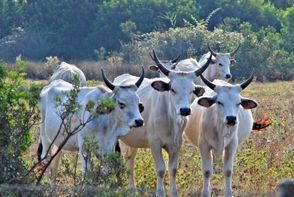 The National Park Undoubtedly, the best part of the Maremma is that it's actually a preserved area of nature, with some of the best wooded hiking trails in the country. Il Parco Regionale della Maremma has trails that go up and through the Monte Argentario peninsula for incredible vistas and panoramas. You can see clear to the island of Elba, Giglio and Montecristo. Hiking in the Maremma requires signing in at a ranger station, but that's for your protection. The trails are well marked and well worth the effort. Some are easy, a few difficult, but all offer a chance to see flora and fauna alike: migrating birds, raptors, horses, wild boars, turtles, lizards, stands of natural lollypop pines and ancient olive groves. And be careful of the apparently tame foxes. They'll come right up to you looking for a handout. Hike A2 - Le Torri, is especially well suited for families with small children. The part of the trail heading down to the beach is paved and well suited even for strollers. The Maremma park is also famous for its Butteri, the Tuscan cowboy--and their long horned cattle. Dressed in high boots, long velvet jackets and wide brimmed hat, they lead their cattle with traditional mazzarella, a hooked wooden staff. There are even opportunities to go on trail rides if you love spending time in the saddle. If you want to experience riding with the Butteri up close and personal, check out Azienda Regionale Agricola di Alberese, located a short distance from Grosseto. And don't forget about the beef itself... Vacche Maremmane (as they call their beasts)--a true delicacy. It is said that the beef they produce rivals the Wagyu steaks of Japan. So don't forget while in the area to feast on a Bistecca Fiorentina, a thick, flavorful steak drizzled with extra virgin olive oil--just don't ask for it "well done"! In the town of Alberese you can rent bicycles for about 8 Euros a day and ride the Maremma's well kept cycling trails. Besides the stunning views, you will come across horses, long-horned cattle and other wildlife, like wild boars and deer. But once you hike down to the shoreline you'll realize the main reason you came here... the absolutely pristine beaches. People collect shells and often use the abundant driftwood to build ramshackle beach huts. There is also loads of history here, such as the Renaissance towers built by the Medici to protect against pirate invasions and the San Rabano medieval abbey. All in all, you will fall in love with the beaches and nature of the Maremma. If you are the gregarious type, book a stay at one of the large resort beaches, play some golf, show off your newest speedo or bikini and sip your Bellini... or, if your more of a nature lover, hike down to a desolate beach and build your own hut from driftwood and have some cheese and wine with your companion, Friday. Happy summer.... --Jerry Finzi Please, stop by our SURVEY and spend 60 seconds telling us how we could make our blog better! And please don't forget to LIKE our Facebook page. Grazie! You can also follow Grand Voyage Italy on: Google+ StumbleUpon Tumblr You Americans disrespect your parents and grand-parents. You want to move as far away from them as soon as you leave school. When they get old and sickly, you put them into old age homes with strangers. We Italians stay with our parents until we are married--often into our 30s or 40s. No matter. We are famiglia. We take care of our parents when they get old and we are still young and strong. After all, they fed and clothed us when we were young, correct? We usually live a short distance from our parents and might even live in our parents house. When our parents pass on we will inherit and live in the Casa di Famiglia, and our children will own it someday. The famiglia is important to us. Our parents and nonne and nonni are the most important and deserve our respect.
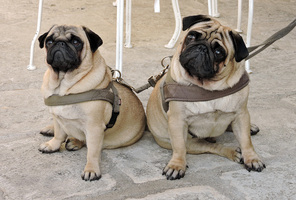 The Matera Twins The Matera Twins Then one night driving back to our Cosona agriturismo in the dark of night, my headlights came upon a heard of sheep huddled near the roadside. I stopped to take a photo and out of the darkness we heard growling and barking from two sheep dogs. They were the white fluffy type--which are raised with the sheep as puppies. They think they ARE sheep, and do anything to protect their flock. Again, no shepherd, just the dogs doing their job. Most dogs in Italy are just pets. City dogs are usually tiny and leashed or carried. Many are cute. Lucas had a great time getting to know some of them. One of his favorites are the pugs we met in Matera we call the "Twins", although the owner said they weren't related. I imagine their real names are Francesco and Marcos. They look very Italian with their old man, social club, people-watching persona.  "Swept Away" by Giancarlo Giannini puppy eyes "Swept Away" by Giancarlo Giannini puppy eyes In towns and cities you see many small lap dogs--small like everything else in Italy, perhaps due to the small apartments and homes. These dogs have personalities similar to the owners--some vibrant, others sweet and lazy, a few fat, all have an eye out for trouble, many are stubborn but all with those deep, passionate Italian eyes--like Giancarlo Gianinni has. However, I did see few owners of incredibly cute fluffy dogs treat them badly--smacking, hitting and even kicking to stop bad behavior. (Dog Whisperer where are you?) There was one "lady"--a mom--we saw in Vinci while having gelati... she was gabbing to her friend as she was walking and tripped over her little white dog, threw a fit and smacked him for tripping her! Even her kids had that same tail-between-their-legs look about them. Some people!
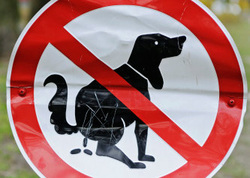 In Italy dogs are pretty much allowed everywhere--even in cafes and restaurants. There are some rules, although I don't think anyone cares about rules for dogs. For example, many towns have some pretty serious dog poop problems. I stepped in dog poop a few times, Lisa only once, but Lucas was luckier--few people seem to pick up after their pets. I've read that in cash strapped Naples, one new scheme for drumming up money is to start keeping a DNA database of dogs and then testing DNA in dog poop so they can hit owners up for fines as high as 700 bucks! No kidding. (Check it out here.) If they can't get the city workers to pick up the garbage, how are they going to get anyone to pick up after their dogs? People don't care because the government allows their city to remain filthy. And how many poop DNA inspectors would they need to hire? How are they going to get DNA samples of each and every one of the estimated 80,000 dogs pooping on the streets of Naples? How about trying to stop the humans in Naples from peeing on the streets? That would be progress indeed! 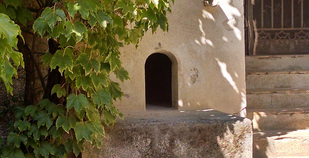 Dog villa at Villa Rufulo in Ravello Dog villa at Villa Rufulo in Ravello Dog houses. I didn't see any like we have in the States, but I did see masonry ones. A dog has a nice life when he has fancy villa style digs in the courtyard of a villa or castle. It might be cold inside, but then again, this is Italy where a cool floor might help a dog get by during the Dog Days of October... --Jerry Finzi You can also follow Grand Voyage Italy on: Google+ StumbleUpon Tumblr Copyright 2016, Jerry Finzi/Grand Voyage Italy - All Rights Reserved
Let the Bocca della Verita (Mouth of Truth) Read Your Palm - From a Vending Machine? Wait... What?!2/23/2016 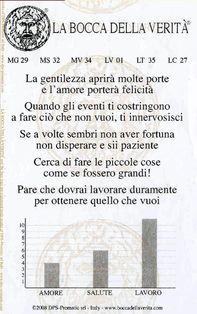 Ok, so while researching my post about our Bocca della Verita mascot, I came across this gem. Apparently, back in the 1980s, a vending machine company had just come up with a new design for a fortune telling machine. They showed off their machine to a prospective Italian client and he loved it--with one catch. They needed to make it look like the Bocca della Verita. Manufactured by DPS-Promatic in Italy, apparently the idea was a hit because the company claims to have units in countries all around the world. Apparently, they also make the machine in different versions: Horoscope, Tutankhamen, and a Gypsy. There is a floor standing model and a smaller wall-mounted one. Here's a video of how to use it. Stick your hand in the mouth and it will scan the lines of your palm. Wait until it analyzes, then it prints out an ATM style fortune... OK, so you're in Rome on Valentine's Day and you want to make the best of it. The balmy weather (with typical temperatures around 50F or above) helps make this a great choice for a romantic getaway. But visiting the Colosseum, with thoughts of lions eating slaves isn't a great place to inspire passion, so.... where to go? First how about a spot with magnificent views of Rome and St. Peters Basilica? That would be the Giardino Degli Aranci--the Orange Gardens behind the Basilica of Santa Sabina. It's free (if you're a cheap date) but the views are unparalleled in all of Rome. You can walk up to it from the Circus Maximus or take a taxi. Try to plan it around sunset... the colors will enhance your romantic time spent there. 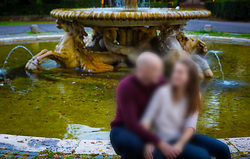 The next spot is classical in its beauty--the Villa Borghese. Most tourists go for the art in its museum (much of which can inspire passion), but I suggest you stroll around the incredible garden and find your own special spot. There are hidden paths, great views at sunset, fountains and loads of benches to settle in and wrap your arms around your lover. One of the prettiest bridges to take your amante is the Ponte Sant'Angelo with fantastic views of St Peters and Castel Sant'Angelo. At night, the lights reflecting off the waters will reflect in your amante's eyes. It's been called the Kissing Bridge because of all the lovers smooching it up there. The Trevi Fountain is my next suggestion. Sure, it can get crowded. Of course, it's an overdone cliché to toss a coin over your shoulder guaranteeing your return to Rome. But it is romantic, especially if you visit after a late supper when it's lighting has full effect. Go ahead... toss a coin to hedge your bet that you'll both return to Rome someday where you both fell in love. But there is another, lesser known small fountain on the left corner, just as Piazza Crociferi opens up, that offers another magical legend for lovers: Couples that drink from it are said to remain together for a lifetime. Well worth a sip with your lover. If you are already engaged and are Roman Catholic, are are already attending your Marriage Preparation courses with your parish, consider a "private" audience with the Pope himself on Valentine's Day held in the Paul VI Hall. This event is called The Joy of Yes is Forever, will take place on February 14th: at 11:00 AM. Not exactly a "private" audience (thousands attend), it still would make a memorable Valentines Day for you and your intended to share. You can register by writing to events@family.va Strolling along the banks of the Lungotevere in Rome is something that lovers--young or old--can't miss. At one time, there were muddy beaches along the river that always flooded the city, but the construction of the Lungotevere's massive massive walls changed all that. Today the Lungotevere used by joggers, picnickers and people taking their evening passiaggiata (stroll). The Tiber River reflects the lights of Rome and offers a romantic atmosphere best at sunset or twilight. I suggest a stroll near the Isola Tiberina alongside the Trastevere neighborhood. You can a great dinner in Trastevere (my favorite Roman area) and go for a stroll afterwards. Or for daytime, pack a picnic lunch and lay out for hours at the point of the Isola with views of Ponte Rotto, the ruins of the oldest bridge in Rome. 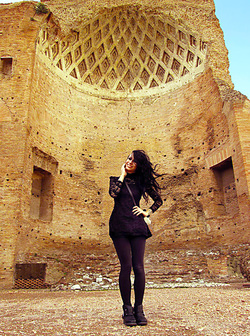 If you consider your Lady Love as being akin to the goddess Venus herself, perhaps you'd like to propose to her in the Temple of Venus. This ancient temple sits in the open on the Velian Hill at the east side of the Roman Forum. This is considered to be ancient Rome's largest temple with one side being for Venus, the Goddess of Love, and the other side for Roma Aeterna--Eternal Rome. It's a fantastic place to make your own history by pledging your love to your Venus for as long as Rome lasts. Love. Even the Italian government has a heart... If you and your other half are both enamored by classical art, then you can save some money thanks to the Italian Ministry of Heritage and Cultural Activities and its annual Innamorati dell’Arte, or In Love with Art offering for romantics who need visual stimulation for their Valentine's Day interlude. On the 13th and 14th of February each year, lovers can visit the national museums and archaeological sites in Rome and get a two-for-one price. 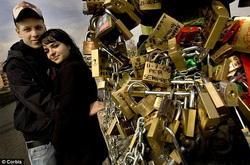 Lock your love and throw away the key into the eternal Tiber River. The Italian author, Federico Moccia started this craze with a scene in his novel Ho Voglio di Te (I Want You). In the story, lovers tie a chain and a padlock around a lamppost on the north side the Ponte Milvio and throw the key into the Tiber River below. Although Rome authorities keep removing the hundreds of thousands of padlocks (fearing the bridge would collapse), lovers are still writing their names and messages on padlocks and locking up their love in defiance. After all, when in Rome, do as the Romans do... live and love to the fullest! Dammi la tua mano e corriamo uniti per tutta la vita
Give me your hand and we will run together our whole lives. This month, Bloomberg Rankings rated Italy as the second healthiest country in the world and the top ranked country for health in all of Europe. This health score is based on a multitude of things: mortality rates, number of people smoking, percentage of immunizations, percentage of population with healthcare, healthcare efficiency, healthcare satisfaction and life expectancy. 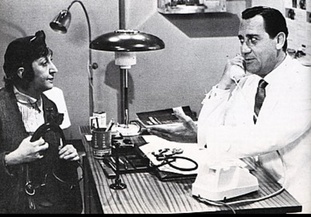 Italian hospitals in the South might look a bit old fashioned Italian hospitals in the South might look a bit old fashioned As it turns out, Italy has one of the most efficient healthcare systems in the world... they came in third for this ranking. And believe it or not, the Italian universal healthcare system has actually been getting better and better from year to year. After World War II Italy reestablished its social security system including a social health insurance administered by "sickness funds". In the 1970s, the sickness funds nearly went bankrupt. In 1978, the government established the SSN (Servizio Sanitario Nazionale), the Italian version of a National Health Service, funded by taxes and including universal coverage--providing healthcare to all citizens and residents by a mixed public-private system. The public part is the national health service, Sistema Sanitario Nazionale (SSN), under the Ministry of Health, but administered by each region.Family doctors are entirely paid by the SSN, must offer visiting time at least five days a week and have a maximum limit of 1500 patients. Patients can choose their own doctor. Prescription drugs are prescribed by the family doctor and are mostly paid for by the SSN with the patient paying only varied copay, depending on the drug and the patient's income. In most regions, poor people receive drugs for free. If a specialist or diagnostic tests are prescribed by their family doctor, the copay is only about $40 for most--once again, the poor pay nothing. Waiting times for specialists can be anywhere from a couple of weeks to a few months, depending on the facility. Surgeries and hospitalization provided by the public or private hospitals are completely free of charge for everyone, regardless of the income. For elective surgeries the waiting times can be several months in the big city centers. Emergency services in Italy are provided by both volunteer and private EMS type services. You can receive emergency service in Italy by dialing 118. Ambulances and treatment are free. General first aid is provided by all the public hospitals and completely free of charge for everyone, citizens, vacationers, even illegal and undocumented immigrants. If the emergency is non-life threatening, a copay is required. In the poorer South, some state ospedali (hospitals), can be considered substandard by U.S. standards. Italian state hospital rooms normally have three to six beds and have no TV or phone. This situation is slowly improving however, as southern regions get a bigger and bigger share of the Italian economic pie. As good as the Italian healthcare system is, the most common complaint is the long lines and waiting times for special tests and seeing specialists. Most seem very satisfied with the actual care they receive from their doctors and the universal aspect of the system. (Click HERE for a great Tripadvisor thread on one person's experience with Italian Hostpitals) 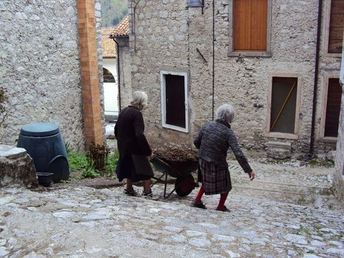 Leave the heavy work to the Nonnas! Leave the heavy work to the Nonnas! Other Reasons Italians are Healthier Of course, one of the main reasons for Italians staying so healthy is the way they eat. There is the Mediterranean diet itself, fish, fresh vegetables, fruit and the use of olive oil in cooking. Meats in Italy are not eaten in large quantities as in the U.S. and the amount of fat in the meats they prefer is also less. Meat is eaten as a separate course in smaller quantities, if at all. Lean pork is popular. Alcoholic beverages are typically drunk with meals and binge drinking is not a socially acceptable concept (although the young are going to clubs and bars more and more). And of course, there's the health benefits many studies have attributed to drinking a moderate amount of red wine in one's diet. In general, the Mediterranean Diet, especially with its use of olive oil (a mono-unsaturated fat) over butter, is considered Heart Healthy by most studies. People who use olive oil tend to have a lower risk factor of both heart attacks and strokes. Another healthy component in the Italian diet is garlic... and not just to keep vampires away. Garlic lowers the chance of heart disease, lowers blood pressure and prevents strokes. It also is very high in antioxidants, considered to aide in the prevention of Alzheimer's disease. Even pasta and pizza are eaten differently in Italy. Italians eat simple pizzas with healthier toppings--not overloaded like American pizzas. Pasta is not served in large servings as in the States, either. As important for relieving stress in life, most families in Italy eat the family meal together--at the same time. Perhaps this promotes a feeling of well being and affords a sense of comfort to la famiglia. One more reason why Italians might be living longer is the inherent exercise in their daily routines. Many Italians in towns throughout Italy take a walk after dinner, usually with their family members and children... the Passeggiata. Communing with neighbors and relatives while talking a leisurely stroll through town adds to one's well being. In addition, the number of hills and steps the average Italian has to negotiate in their daily lives is much more than in the U.S. Most towns were built in an era of feudal warfare, causing them to be built on top of hills and cliffs for protection of their community. This means that most towns are very hilly and have thousands of steps and inclines. It amazed me whenever I saw octogenarians with canes going to the local alimentari to do their daily shopping. Exercise is something they get, whether they plan on it or not. During my three week Voyage though Italy, I lost 18 pounds, even though I felt like I was eating everything in sight... Consider this old Italian saying... La salute prima di tutto! - Health is first of all! --Jerry Finzi You might also be interested in this GVI article: Emma Morano: Europe's Oldest Person is 116 Years Old! If you enjoyed this article, please SHARE it and LIKE it on your favorite social media site. Ciao! We also have pages on: Google+ StumbleUpon 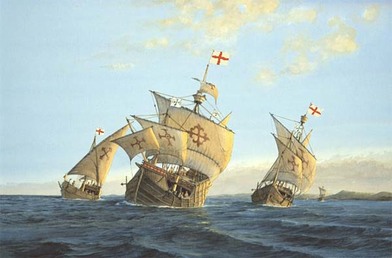 When we decided to travel to Italy, we knew it was there. Columbus had no idea that the Americas existed, but he knew--or at least, thought--that the Orient that Marco Polo had previously explored was there. He was looking for a shortcut to replace the long arduous journey through the Silk Trade Route to the Orient. It's been 523 years since he "sailed the ocean blue, in fourteen hundred and ninety-two" as we learned in school. Most people today think that people in the 15th century thought the Earth was flat, but in fact from the time of Aristotle it was well understood that our planet was a sphere. The ancient Greek mathematician Ptolemy proved that the Earth was a sphere and within a few hundred years of his death, other mathematicians and ancient astronomers even calculated the size of the Earth's circumference to near precision. Columbus and his advisers were confused by the various methods of measurement used in the ancient calculations and got the size wrong... leading to his belief that the Orient was closer than it really was--in a westward direction across the sea. He had no idea that there was a couple of continents in between Europe and China. Cristoforo was not born on born October 31, 1451... no one really knows the exact place or date of his birth. One respected historian puts his birth somewhere between August and October, 1451 in Genoa. Some other theories put the range of his birth year from 1436 to 1455! With such extremes, Columbus could have started out on his Voyage to the New World as young as 37 or as old as 56. In a time when most people died early from disease, Columbus living into his seventies is unlikely. This is one reason why most historians consider 1551 to be his birth date. Where he was born is also debated. Genoa is considered to be where he was born, but exactly what town? His father, Domenico was a wool weaver who worked in Genoa and Savona. As many people in modern day Italy, he had a couple of of ways to make a living... his second was that of a cheese monger, with young Cristoforo working as his apprentice. His mother Susanna Fontanarossa also gave birth to other sons... Bartolomeo, Giovanni Pellegrino, and Giacomo, and a daughter, Bianchinetta. Bartolomeo worked in a cartography workshop in Lisbon--along with Cristoforo--for at least part of his life. Columbus as a young boy and man was in awe of the sea. He read everything he could about the sea and being a mariner. He eventually learned to sail himself on small vessels in and around Europe. He became fairly talented, especially at navigating and map-making at 25 he and his brother worked as cartographers in Lisbon, Portugal. In 1480s he sailed and explored Africa and learned many things that would help him on his later explorations. For instance, he learned how various large seeds and plants would was up on the shores of Spain and Africa--species that were unknown to botanists. They had to be coming from somewhere, he thought. In the 1480s he presented his ideas to King John of Portugal. Just after this, Bartolomeu Dias returned to Portugal with after his successful rounding of the southern tip of Africa which proved there was a new eastern sea route to the Orient. King John was no longer interested in Columbus. He rejected his proposal. Next was a presentation to King Ferdinand and Queen Isabella or Spain. At the time he offered his plan, the Spanish Inquisition was in full swing... he had better not offend anyone, or else. They didn't accept right away, but then realized that if Columbus' plan worked, they would have a chance to get ahead of their successful upstart neighbor, Portugal. He negotiated for grand titles along with 10% of the profits of the venture (which the Spanish King and Queen reneged on after his voyage, leading to years of law suits against the Crown). Columbus's Voyages were very arduous and his first excursion with the Nina, the Pinta and the Santa Maria had its own troubles. He left Spain on August 3, 1492 and sailed west. He convinced his crew that enormous wealth awaited them, but as they passed the Canary Islands all they found was a dead calm--no wind. His crew started to second think his plan. But by September 3rd the winds started to push eastward on a calm sea. Unknowingly, he had just discovered the Southern Trade Winds that would carry westward bound ships for hundreds of years into the future. The passage dragged on and the crew became restless and thought of mutiny. Columbus kept two sets of ship logs--one to appease the crew with daily reports of traveling greater distances than they had actually gone. The second log recorded the true, slower measurements. By October 10th the crew was about to explode... but luckily (for Cristoforo) land was sighted the very next day. He didn't get rich--at least not right away. He didn't find the Orient. He didn't find gold and pearls. But he did stumble onto a New World. He's not a perfect man by any means. He also enslaved thousands of the native people, bringing back hundreds to Spain (with 200 dying on the return trip), and introduced European diseases to the indigenous people his army of men came in contact with. The native population of Greater Antilles and Bahamas dropped from one million to around 500 people within 50 years of contact with Europeans. He disobeyed the Queen about her desire not to take slaves and was thrown into chains--for a while. In the end, he made four Voyages. Their immediate success can be debated, but the contribution toward bridging the New World with the Old cannot be questioned. On 20 May 1506, around the age of 54, Columbus died in Valladolid, Spain. He never set foot in Italy again, but is still thought of as one of Italy's most successful sons. An interesting side note is that none of the portraits we know of Columbus are done from life. All are painted after 1519, years after his death. Still, there are statues, stamps and money with his likeness on them... and even an asteroid that bears his name. 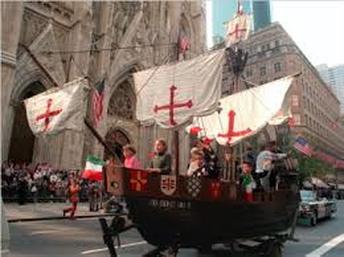 Then there are the places bearing his name: District of Columbia, Columbia University and the Columbia River. There are Columbuses in Ohio, Maryland, Missouri, South Carolina, Indiana, Georgia, Nebraska, Texas, Montana, Mississippi and Wisconsin. Of course there is the country in South America, too. And of course there are the parades in his Honor, one of the largest being held in New York City each year. And that brings us to Columbus Day. The first state to officially observe Columbus Day was Colorado in 1906. Angelo Noce, an Italian immigrant who was the founder of Colorado's first Italian newspaper, La Stella. Noce, and fellow Italian-American, Siro Mangini both worked with Colorado's first Hispanic state Sen. Casimiro Barela, to sponsor a bill proposing a Columbus Day holiday. Mangini owned a tavern named Christopher Columbus Hall, thinking that he was the only Italian Americans would not throw rocks at. Within five years of Colorado's creating the holiday, 14 other states were also celebrating Columbus Day. It took until 1934 for Columbus Day to become a federal holiday during Franklin Roosevelt's administration. The Knights of Columbus was the driving force in the creation of the holiday. In 1970 Congress declared the holiday would be on the second Monday of October. Although it's a national holiday with banks, post offices and Wall Street closing, it's still not a holiday in some states. As a kid I always wondered why "our" Italian holiday didn't mean a day off for us. Still, if we don't celebrate the man himself, we should all celebrate the bridging of Europe and the New World. If it wasn't for the years of discovery, we all wouldn't be here... --Jerry Finzi If you enjoyed this post, please share it with your friends. Grazie. 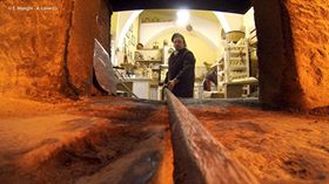 A bread's-eye view of Vito at the Forno A bread's-eye view of Vito at the Forno You will find Antico Forno Santa Chiara in the southern region of Puglia behind the walls of Altamura, where their world famous Altamura bread is made. In fact, Altamura bread can only be made in Altamura... it has D.O.P. designation and is under strict standards to be able to use the name "Altamura" bread. Vito Macella, is the owner, baker and a bit of pirate and showman. He loves to show off his historic forno (oven) that dates from 1423. His is one of of the first public ovens in Altamura, used for cooking meats, biscuits, pretzels and other Pugliese baked specialties, and of course, the famous Altamura Bread. A short walk inside the walls of the historic center and you'll come to the Forno. You can park your car on the Corso Vittorio Emanuale II just outside of the old arched porto where Via Madonna dei Martiri begins. Take a stroll three intersections until Via Corte D'Appello and then you'll see tiny Via Luca Martucci on your left. It's really like a very small piazza with the Forno Antico at the back left corner. You'll probably see a large round table outside with an umbrella over it. There might be people sitting, chatting and eating. Sit with them and join in. When Vito comes out to greet you, tell him you would like una degustazione (a tasting) of whatever he feels like putting in front of you. Depending on what he baked that day, and what other local ingredients he had to create with, he might bring you a plate of antipasto, focaccia, squares of pizza, olives, tomatoes, tiny bocconcin (mozzarella balls), sliced caciocavallo cheese, prosciutto, lardo, or carpaccio--paper thin slices of raw veal marinated in red wine. Oh, of course, he'll always have some of his Altamura Bread for you to taste. We consider unexpected lunch we had at the Forno as one of the best we ate in all of Italy. Inside the doors of the Forno you can see Vito at work at his rustic oven. The stacks of wood are what he uses--early each morning--to fire up this massive cavern. It takes lots of hard work and many hours to get the mass of stone inside the oven up to temperature. The bread of Altamura is made according to traditional methods and with high quality, local ingredients, the two most important (as Vito told me) being the water and the local Durham flour. Altamura bread was the the first product in Europe to bear the D.O.P. logo in the category "Bakery and baked goods". No wonder--it's such a special bread. The loaves are quite large with a shape like a floppy chef's hat or a sort of fat beret. It is airy and full of bubbles inside with a dark brown crust nearly 1/4 inch thick. Unlike Tuscan bread, they use salt in Altamura Bread, so there's loads of flavor. One more thing: The bread can stay fresh for weeks... some say for a month! A loaf we bought Vito's bakery lasted up for several days all the way back to Rome. But again, there's more than just the bread to experience here. Vito offers the biggest dose of Southern Italian hospitality that anyone can find. He is charming, roguish, funny and inviting. You'll meet his kids and sit with strangers talking many languages, but somehow you will all be friends in the end. By all means, buy some bread and other treats here, but just soak in the atmosphere, the personalities and the wine.
Don't pass by Altamura. You won't be disappointed. --Jerry Finzi If you enjoyed this post, please, please, please, tell all your friends about us. Grazie. When I was a boy, we used to take a ride every week or so down to Willow Avenue in Hoboken, New Jersey to visit my maternal Grandmother at her apartment in a brick row house. The visits were boring for the most part for a little kid who would rather be playing "down The Cliffs" overlooking the Hudson River, the Erie-Lackawanna railroad yards and the Manhattan skyline--my childhood playground. "Gramma" was a bit abrupt in those days and her apartment was very formal... doilies on the backs of chairs, under vases, under candy dishes... basically, doilies everywhere. The candies in the bowls were almost always those hard-as-rock candy coated almonds or sour candies. I wasn't a fan of either. If I was was offered what Gramma considered a "cookie", it was typically one of those dry, hard tarelle which didn't dunk well in milk and threatened to break my teeth. Even if she had the type with icing on top, it was still a very dry mouthful. For lunch it was usually some pasta with my Gramma's sauce--overloaded with onions and peppers. Not what I was used to (when was eleven, I first tried to blame my appendix pains on her sauce). For entertainment, there was no TV... only a radio tuned permanently to the Italian radio station. There was no such thing as kid-friendly in those days, and most Italian nonni back then didn't keep a stock of snacks, drinks and toys at their houses to entertain the bambini during their occasional obligatory visit, as millennial grandmothers do nowadays. But there were two things I loved doing when I went to visit her. My sister and I used to head out across the street to a row house that had a little shop window a few steps down the basement stairs--the Nut Man. He would slide open a heavy wooden "window" and sell us a bag of his salted pumpkin seeds for about 10 cents. They were so thick with salt that my lips would go numb. I loved the salt more than the seeds inside. Then my sister and I would then walk down to the end of the block where there was my all time favorite thing to do... a visit to Mimi. 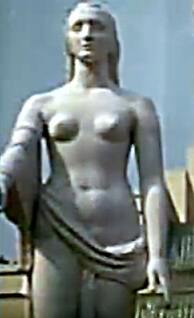 Freeze frame from an old film of the Italy Pavilion at the 1939 Worlds Fair Freeze frame from an old film of the Italy Pavilion at the 1939 Worlds Fair In the vacant lot at the end of my Gramma's street was a huge white statue of a beautiful, half-naked lady laying on her back. Her profile reminded me of the Statue of Liberty with a strong nose. Her one arm was laid at her side while the other was held up toward the sky as she lay there. She was beautiful. She looked hot to my 7 year old eyes, but as a young artist, I secretly wished I had sculpted her, like Michelangelo might have. She was also the only truly large statue I had seen up to that point--a real treat for a budding artist--my Mom always said that I could draw before I could talk. I remember doing my first really good portrait of a Chinese boy in my class when I was six. I shocked my mother once, asking for her to "pose in the nude" for me--her foot. (She got a big laugh out of that joke, but my pencil drawing came out fantastic). Staring at this huge white statue intrigued and inspired me... "Maybe I could carve a statue like that some day!" The Legend... Now, I'm not sure who told us the story of "Mimi", as she was called, but there was a spooky, scary legend that I was convinced must be true. We were told that every night after midnight, Mimi would stand up and walk slowly around the streets of Hoboken, and by daybreak she would come back to her vacant lot behind the chain link fence to sleep. But there was more... We were also told that if you stare at Mimi very closely... focused on one thing (her eyes, her hand, her foot) that you might see her move. It might not be much, but just enough movement to convince us that the legend was true. Well, as I sucked the salt from those pumpkin seeds, I'd stare and stare and try not to blink as I watched the corner of Mimi's mouth or the tip of a finger... and I'm not sure if it really happened or not, or was the effect of all that salt on a seven year old's blood pressure causing my eyeballs to twitch, but I swear I saw her move more than a few times. I was sure the Legend of Mimi was true. Now fast forward almost sixty years... A while back I was scanning, editing and enhancing some old family photos when I came upon this one of my Dad standing in front of the Italian Pavilion at the 1939 Worlds Fair. As I blew up the image in Photoshop to retouch it, I suddenly had a familiar feeling... It's Mimi! It had to be. She has the same strong nose, the same lack of proper attire and had one arm raised. She seems about the right size, too.... from 12-15 feet tall or thereabouts. I've since done a lot of research trying to find out what happened to the sculptures after the 1939 Worlds Fair in New York.--to no avail. There are some references, which I'm sure are true, about these statues being mostly made of plaster--they weren't made to last. Thinking back, I'm sure Mimi was plaster, not stone. I'm sure much of the fair grounds were simply demolished and would up in land fills. But I'm also convinced that some things must have been taken by demolition crews, members of social clubs of various nationalities, and other connected people. Tearing down such a beautiful Worlds Fair must have had the garbage-pickers and hoarders coming out of the woodwork. Plus, Hoboken always had a very large contingent of Italian immigrants living there. Many were active in Italian societies and organizations. Many also had connections to back home in Italia (Hoboken and Molfetta Italy, where my father was born, both host the Festa di Martiri). Others were perhaps "connected" in other nefarious ways to the Mob--and along with it--to the construction, demolition and garbage haulers of the day. It would be a simple task to truck such a statue back to Hoboken in hopes to use it for something... someday. Who knows, perhaps to decorate a daughter's backyard wedding! I've done some research and never found a direct connection to my "Mimi" and the "Roma" statue (as it was named for the Italy Pavilion), but in my mind's eye, it's her. I can't tell you the feeling I got when I first saw that photo of my Dad after not really paying attention to it in so many years. And I've got to tell you... Mimi did influence me in my art. After always being known as an artist all through my childhood, I eventually left high school early and got a job as an apprentice metal sculptor for a studio that designed churches all over the world. After that, I eventually found my way into commercial advertising photography, a craft where my art was ever-present. When visiting Italy my eyes were always drawn to sculptures, especially the ones with strong, proud, Italian noses--just like Mimi had. Perhaps someday I'll find someone who remembers Mimi and how she got to lie on her back in a Hoboken vacant lot. I wonder what ever happened to her... Darn.... now I'm getting a craving for some salted pumpkin seeds.... --Jerry Finzi If you enjoyed this post, please tell your friends about us... grazie. The contents of this article are copyrighted material. Copyright 2015, Jerry Finzi - All rights reserved
This off the beaten path museum in Mantova (or Mantua) is a great stop for children. They'll see the reddest, shiniest, vintage firetrucks, pumps, motorcycles, fire helmets and fire extinguishers of all types. This museum is especially fun for American children because the firetrucks are--well, Italian. In 1991 the museum was installed in a beautifully restored horse stable and run by a brigade of volunteers who are all retired firemen. They must be taking great care with this collection because people who have visited say there's not even dust on the exhibits. There are over 50 historical vehicles, restored and in remarkable shape. You'll also find a collection of miniature firetrucks and manikins wearing very beautiful vintage firefighting uniforms. The helicopter and amphibious vehicle only add to the kid-appeal of the place. This is one of those non-touristy things to do with your kids that will separate you from the rest of the tourists and give your children unique memories of their travels in Italy. About 20 miles from Verona, the best thing about this museum is the cost...it's free. As a bonus, the town of Mantova is gorgeous. (The town is called either Mantua or Mantova). Museo die Vigili del Fuoco
Address: Largo Fire Department - MANTUA (Mantova) Phone: 0039 0376 22771 - Fax: 0039 0376 227746 E-mail: comando.mantova@vigilifuoco.it Hours: Opening times: Saturday: 14:30 to 18:30. Sunday and holidays: 10:00 to 12:00 and 14:30 to 6:00 p.m.. Open on different days upon reservation. Closed from 6th January to 15th February; from 1st to 31st August; On Christmas Day, New Year`s Day and Easter Sunday. --Jerry Finzi If you find this post interesting, please SHARE it with your friends. I don't know about other parents, but in our little famiglia we are inseparable--we love being together. That's a big plus when you commit to being stuck on planes, trains, automobiles and in small apartments or hotel rooms together. But we planned well, we have a great kid in Lucas, and he helped us know what his needs were as we went along. So, here's some lessons learned--mostly Lucas teaching us--that might help with your family's trip to la Bella Italia. Food: Thankfully, if you have a child who wasn't raised on McDonalds, take-out or Chuck-e-Cheese pizza, Lunchables and Pop Tarts, you are ahead of the game, as we were with Lucas. So far, the only food he balked at was a whole lobster staring him in the eye up in Mystic, Connecticut. We were right in thinking Italian cuisine would not be a concern for Lucas. So, what will keep your kiddie well fed?
Entertainment: Electronics. By all means, this is no time to limit their iPod or smart phone use. Before you leave home, let them shop for and install some new games. Lucas kept one of our Kindles in the back seat of our car with Minecraft to keep him from getting bored. And he still put it down when passing by beautiful vistas, castles, and through crazy, windy roads like in Amalfi. Here's what tech things helped him from getting bored:
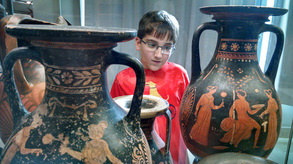 Contemplating the past at Ignazia Contemplating the past at Ignazia Education (disguised as FUN): This is tricky. If you make them think you are going someplace just for their education, they'll shut down and act bored. We let Lucas choose some of his "must see" places while we were planning the trip. The Leaning Tower of Pisa and the Da Vinci Museum in Vinci were his top ones. Here are some other ideas from our trip:
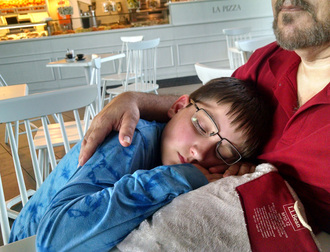 Jet lag napping after a car to the plane to a taxi to the train. Jet lag napping after a car to the plane to a taxi to the train. Resting: Basically, we had a talk to Lucas before the trip and told him that when he felt tired, not to fight it and have a catnap. This helped prepare him, so when in the car, he would nap for a short while then feel refreshed. Once in a railway station he was so exhausted, he gave in to my pleading just to lay his head down on his rolled up jacket right at our cafe table. He was out like a light for about 1/2 an hour which really helped him. More ideas:
ACCOMMODATIONS:
TRANSPORTATION:
I hope this helps you plan for a trip with your kids. Kids are flexible when they fall, and very flexible when they travel. Besides, give your kids a trip to Italy and it will change their lives forever.
--Jerry If you like this post, please COMMENT and SHARE it with your friends! And please, stop by our SURVEY and spend 60 seconds telling us how we could make our blog better! Grazie! By the way, even though we are now well away from the trullo region, we are now seeing more and more ancient forms of trulli... cone shaped piles of rock burial tombs, and stone dwellings with stepped dome shapes (less pointed than a trullo). All very old and ancient--their stones weathered and lichen covered. The dwellings are obvious--they are taller. The tombs are often fairly low to the ground and clustered together. There are also other types of ruins commonly seen in this area of Italy. The Poste--surrounded on all sides by dry laid stone walls--were used for centuries by shepherds to protect their flocks from predators and weather. The other type is called the Jazzo (jazzi, plural), for sheep farms. It's a good thing that this area is a national park which protects these treasures. The sad thing is that some species are endangered or have disappeared altogether... like the Egyptian Vulture. 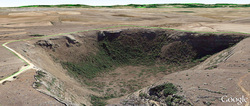 A Google Earth view of the sinkhole. A Google Earth view of the sinkhole. We then drove to the other side of Altamura... out into the Alta Murgia, the gently rolling plateau where I surprised Lucas with the gigantic Altamura Sinkhole. (Lucas had become quite the sinkhole expert after a recent science fair.) We were all shocked at the vastness of the thing as we pulled up to the rim of the ancient crater. It was about half a mile wide and about 500 feet deep. It collapsed thousands of years ago and provided homes to primitive man in the caves just under its rim. The reason it collapsed is the structure of the Murgia itself. This is a karst region, geologically speaking. That means the limestone structure underground is filled with caves, many sometimes collapse causing a sinkhole. We were all amazed. Lucas and I decided to roll a boulder down and see if we could hit the bottom. It stopped halfway down on a ledge... and I threw a muscle lobbing it in. One more thing. Today I finally saw my first hoopoe bird close-up... a woodpecker sort of bird with long tail, curved beak and a flashy comb on top of his head. When they fly all you see is a flash of black and white and that crazy comb. The Alta Murgia National Park is one of the little known wonders in Italy--a nature lover's delight. You see, there's a lot more to Italy besides the Leaning Tower, gondolas or the Trevi Fountain. A whole lot more. I've fallen in love with the Natura d'Italia.
--Jerry F. 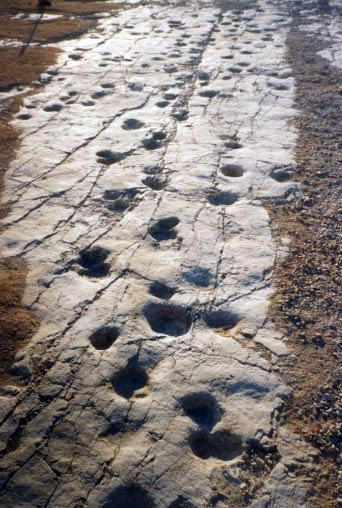 A few of the two thousand dinosaur footprints at the bottom of an abandoned quarry near Altamura. A few of the two thousand dinosaur footprints at the bottom of an abandoned quarry near Altamura. After Castellana di Grotte I wanted to surprise Lucas with something else incredible... but not all well laid plans come to life. We drove a stark landscape via my lat long coordinates to a quarry where they recently discovered thousands of dinosaur footprints of several species. But when we got there a locked gate prevented us from entering the site. It seems the site is in transition... a half built visitor center and a locked gate. A nearby railroad worked told me the only way to visit is to make an appointment with the owner of the land who lived in a nearby town. Darn... that would have been cool... but we are very short on time today... Nearby there is another ancient find that you need an appointment to visit... the Altamura Man. He is a 130,000 year old ancient Homo Sapiens species whose fossilized bones were found in situ in a cave near Altamura. There is really a ton of ancient history in this area. --Jerry F. 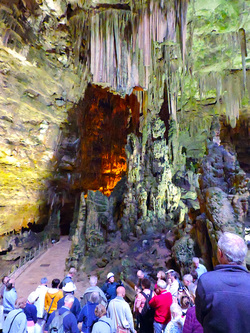 The crowd on our tour. The crowd on our tour. In the morning, we finished breakfast at our trullo, said goodbye to our host, and drove on to Castellana di Grotte, a cavern system in Puglia. When we arrived, Lucas felt sick, so we delayed our tour until he felt better...a mild case of twisty road car sickness. A cool drink and lemon gelato pop put things right and he was good to go. Rather than walking down hundreds of steps with the main group, we opted to take the elevator with the other folks with mobility issues, which saved our legs for the rest of the tour. (A bit embarrassing since the rest were very old people with pretty severe walking problems). We didn't know that they'd make us walk uphill and around to the highest point on the Grotte property where the elevator shaft stuck up above everything. We had already walked down to the entrance, then Lucas felt ill so we had to walk way up to where the snack bar was, then back down to the entrance waiting on line for 20 minutes (even though it was late for the time of our tour) and now we were going way back up. Sigh. The cave itself had lots of steps anyway and fairly steep and slippery paths, both upwards and down. The main cavern is a 180-foot tall bubble in the earth...with a 50-foot wide oculus on top, letting the sun shine in. We went through four huge chambers and loads of side passages...stalagmites, stalactites, huge columns, bizarre shapes...all colorful and strange. Lisa thought Luray caverns was better, but Lucas and I were wowed. They only allowed pictures in the first chamber (an arbitrary rule), after that, the tour guides turned on their jailhouse charm...watching us like hawks and threatening to end the tour if anyone snapped a pic. They even came after Lucas at one point as the tour started and he was still taking pics beyond some imaginary point of NO PHOTOS. Ridiculous. I'm a professional photographer and this stuff always gets me--especially for amateur shots. A pro might bring lots of equipment and tripods, flash units, etc.... and they have a means to earn money on the photos. But amateurs don't typically earn money at all, so when tourist places forbid picture-taking the only reason is they want to ensure purchases of their own promo materials... books, postcards and the like. These rules are silly. Anyway... We made it out alive, but my knees sure didn't. By the way, anyone visiting this cave should know that while it is a bit cool, at least during this warm October the humidity was very high and sweating was unavoidable. --Jerry F. 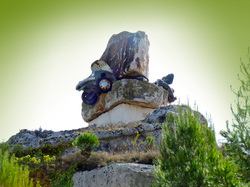 Crushed car sculpture. Crushed car sculpture. Before leaving Matera we drove across the canyon to get a look back at the cave city. But first, a stop at an outdoor sculpture park where Lucas' favorite was an old Italian car crushed between two boulders about 60 feet up in the air. Wild. Then we drove to a spot overlooking the canyon. As we drove into a wide parking field at the edge of the canyon, I saw another of the dreaded parking lot scammers... waving for me to park where HE commanded. I didn't drive toward him and went right to the edge of the canyon to park. When I got out of the car, he started claiming that it was too "pericoloso" (dangerous), even though there were others parked there. Mind you, this is a parking area in a free, national park. He got upset when he realized he wasn't going to get a parking "tip" from me and seemed to disappear (just like the one in Florence... must be in the same union). The gravina looked like a little Grand Canyon with cave homes clinging to the mountain above the gorge. A wide stream was far below. We explored some ancient caves that people had lived in tens of thousands of years ago... and saw a cave church. Both lizards and blue shirted Italian boy scouts darted about. On the road again, I had a quick stop for Lucas that I thought might interest him. The Italian Space Agency had a radio telescope research facility nearby... with several large telescopes. I had heard there was an exhibit inside the facility but we were not allowed in. Perhaps it's only for Italian school trips. Still it was great to be up close to these large devices. 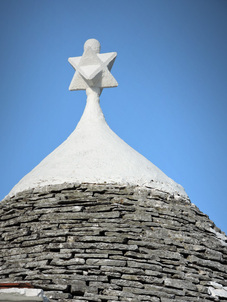 Trulli can have shaped finials on top. This is one of my favorites. Trulli can have shaped finials on top. This is one of my favorites. We then told Tommy to head toward our Trullo rental... Trullo facts: Trullo = one. Trulli = more than one. They say that the people in this region designed trulli around 1400 to get out of paying taxes (sounds like modern Italians) because a distant ruler raised taxes on permanent houses. A trullo traditionally was built using no mortar, so when the tax man came visiting they would dismantle the trullo. I'm not so sure about that because there are more ancient tombs and more rounded trullo looking structures that might be an earlier version. Besides, it would have been a huge effort to completely dismantle and then reassemble even a dry laid stone structure. It might simply be a method of dealing with the very strong seasonal winds that can plague the Adriatic coastline--wind won't blow down a pointy, cone shaped roof. For the same reason church steeples on the Côte d'Azur are made from filigree ironwork and not brick or stone. Many trulli have ancient symbols painted on their cones... some early Christian, some pagan, some zodiac. These are supposed to protect the home. Trulli are often made of us more than one connected trullo and the rooms inside have tall pointed ceilings--keeping them cool in the hot months. As we got closer to trullo country, the roads closed in with white rock walls on either side... like they have in Ireland or England. The fields contained horses, olive trees--more olives down here than anywhere else in Italy--or crops of various salad greens. There are vineyards too. This part of Puglia makes most of the country's wine. Some fields had been harvested and fresh manure was spread, reminding me of the spring back home, except this is October and they must be preparing for a winter crop. 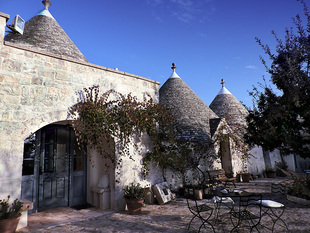 Our Trullo home: Trullo Gallo Rosso Our Trullo home: Trullo Gallo Rosso After driving through narrow, wall lined back roads, barely seeing any other cars, we pulled into Trullo Rosso. It's like a little hobbit house with eclectic gardens decorated with various tools from olive oil production from the old days. Our host, Hugo was extremely friendly and responded to our every need. The rooms were clean yet rustic... with four trulli cone ceilings.... each of our bedrooms looked up at a cone. There was even a fireplace... too hot for that, though. That afternoon we decided to do the big tourist thing around here... we visited Aberobello, a town filled hundreds of trulli in the historic center. It was like a festival... lots of people, but curiously mostly locals. The cruise ship bus tours drop off thousands in the mornings but they were all gone and the locals were in their passeggiata mode.... strolling, smoking, gossiping, drinking, all wearing puffy quilted.coats.or other winter garb. The cool 68 degree evening was way to cold for them. We were stared at... shorts and shirts gave us away as other worldly.
We bought some gifts and I got Lisa a silver pendant of one of the ancient trullo symbols... the trident... representing the Holy Trinity and (my thought) our We Three family. We three had dinner in a tourist restaurant... after 8pm, of course. Sigh. Not great, but similar to a stop at a pizzeria back home. Having gone through another day with no lunch, we were starved. The drive back was easy because of the white walls lighting up the sides of the roads. Sleep came easy as we looked up at the rustic cones above our heads... --Jerry F. 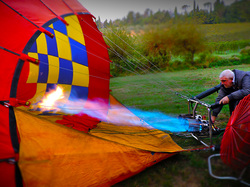 Stefano firing up the balloon. Stefano firing up the balloon. Well, we did it! My Kindle's bell alarm got us up at 5am and we got ready as quick as possible to get on the road. We were actually a little early for our flight so the balloon crew hadn't arrived yet. A phone call and a few minutes later, Gianna pulled up to the side of us in her BallooninTuscany.com shrink-wrapped Range Rover. A handsome, outdoorsy smile greeted us and said to jump in her car for the drive to the launch site. A tumbling roller coaster of a ride through the woods and we spilled out into their hidden field. It's there we met Gianna's husband, Stefano, the burly, smiling maestro of ballooning, having just arrived with his balloon trailer in tow. He made us feel confident right off... his cigarette and smile seemed to go with each other. His generous frame spoke of loving life and pasta. He spoke English charmingly well, having had lived in New York City back in the early Eighties. In another age you could picture him as the aging flying ace putting all the younger pilots though their paces. In fact, he has trained most of the current crop of competing balloonists. Stefano, Gianna and a young assistant pilot, Roberto, set up the balloon methodically... first the basket, then pull and stretch the balloon along the ground, straighten out the lines and cables, then the burners, fire them up, inflate. The first test blast of the burners spooked all of us. The thing sounds like a jet. The whole process took about 25 minutes. We then climbed aboard--Lisa did a great job getting her aching knee on board, Lucas climbed right over, and Babbo climbed up and slid in. Before we knew what was happening, Stefano had us up and away within seconds. In a minute we had already risen higher than any trees and were enjoying a misty Tuscan sunrise. I can't describe the peacefulness of it... the gentlest motion you can imagine... the occasional sound of dog barking or a hunter's shots far below.... the far off layers of high mountains north of Tuscany... the Towers of San Gimignano off in the distance... the textures and geometry of vineyards and olive groves... the hovering and drifting wisps of smoke as farmers all around were burning their olive tree prunings. You could smell the smoke even from up high. Looking down on villas and peasant farmhouses alike. After about 1-1/2 hours, Stefano proved his skills by not only putting the balloon down in exactly the field he wanted, but by actually landing the basket right behind the balloon's trailer (so Lisa could climb out easier right onto the trailer's bed!)
The other reason I chose Stefano and Gianna as our balloon hosts was because, unlike the folding tables in the landing field with cheap wine, cheese and fruit, we were driven back to their 600 year old country home for a brunch with a quality Prosecco. Sausage, proscuitto, cheese, fruit, amazing thick millifiori honey (tasted like jam), a Tuscan raisin bread, rustic bread, foccacia, orange juice, and more.. All this, plus great conversation (Stefano is a bit of a philosopher), 4 little dogs for Lucas to play with, and a tour back in time--of their house... with the most amazingly authentic Tuscan kitchen! Overall, one of the best experiences of my life... we went to over 2600 feet high. Lucas and Lisa feel the same. Thank you Gianna and Stefano! --Jerry Finzi P.S. If you like what you've read, please LIKE us on Facebook and SHARE us with your friends who might also be interested. Gratzie! 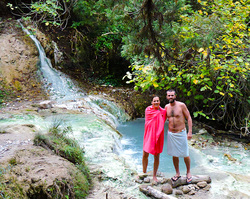 Two locals taking in the waters. They said it wasn't as hot as it was a few months ago. Two locals taking in the waters. They said it wasn't as hot as it was a few months ago. As soon as I parked the car along the steep roadside, Lucas said "What's that stink?!" The rotten egg smell helped Lisa guess... natural hot springs. The Bagno San Fillipo have been there for eons... Roman Caesars and popes have bathed in their sulfur hot waters. Since we parked our car right above the first 100 foot tall stalegmite-like snow white formation, the steamy stench made Lucas pull up the neck of his shirt over his suffering nose. It really smelled like rotten eggs. He decided maybe this was a good cover for his farts. I couldn't tell. We hiked down into the gorge and found this formation... and a much larger one beyond--two tiered and stepped. Picture white cream puff mountain steaming. Streaks of colors here and there. We didn't go in ourselves but the water was like a warm bath--some areas are much hotter than others. Many local Italians bathe here for curative effects. All I know is what I read... wear old bathing suits because you will never lose that stink. We talked to an Italian couple who were bathing there and they said it wasn't as hot as a few months ago. There is a proper spa in town that gets the waters piped in directly from these springs. Italy is a volcanic land after all... This was a fantastic off the beaten path sight to see. This country is full of natural wonders. The geology of the place staggers me. Next... same day, a castle tower on mountaintop... --Jerry F. |
Categories
All
Archive
January 2021
|


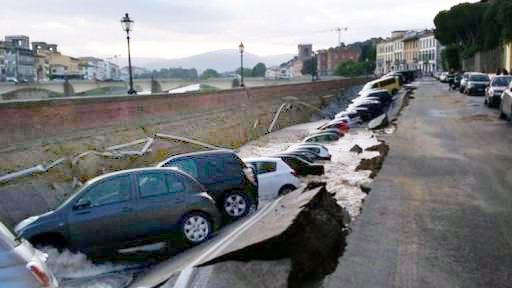
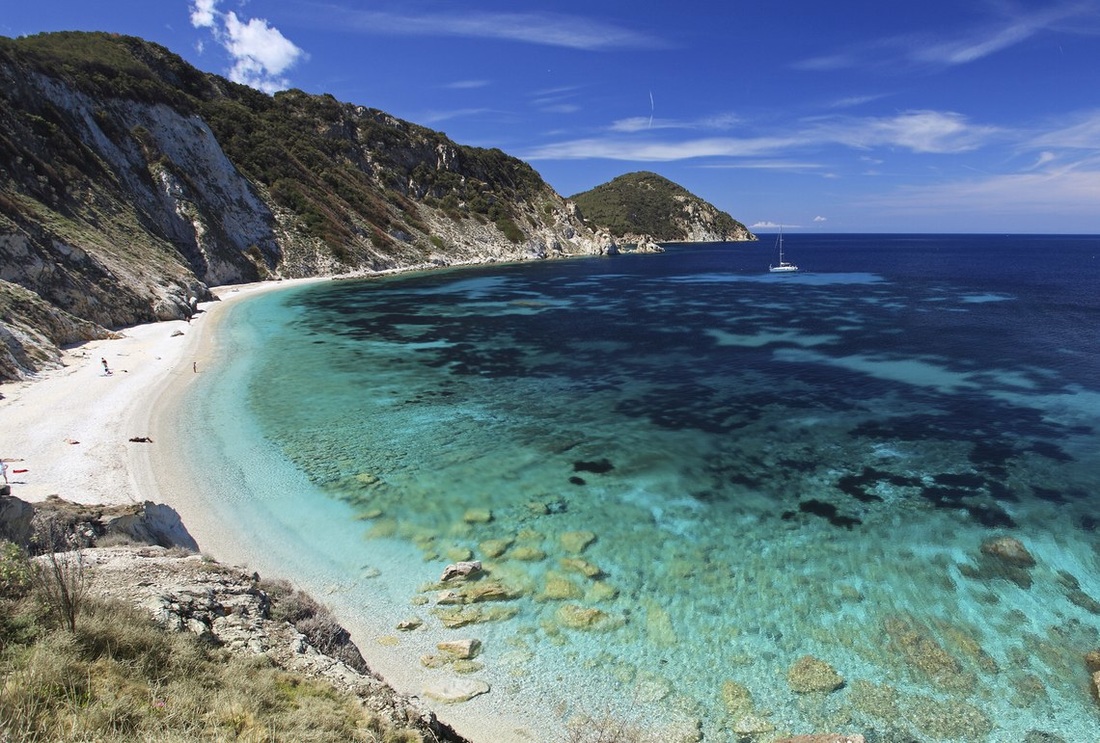
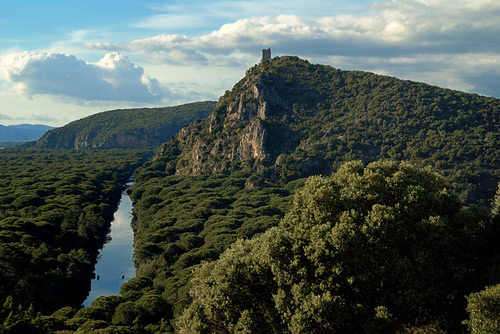
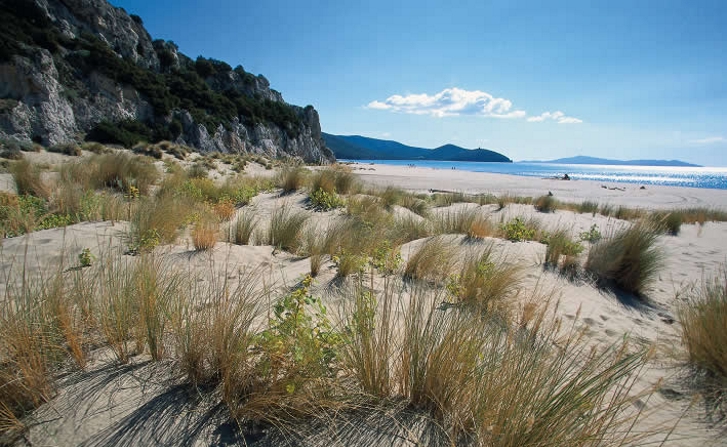
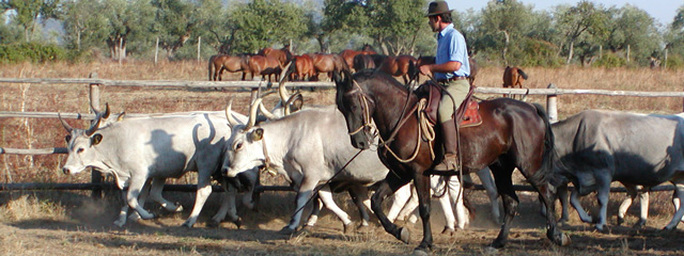
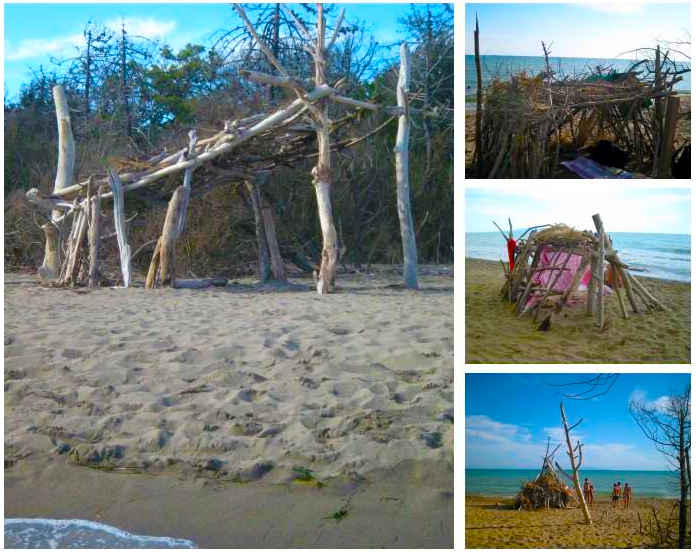
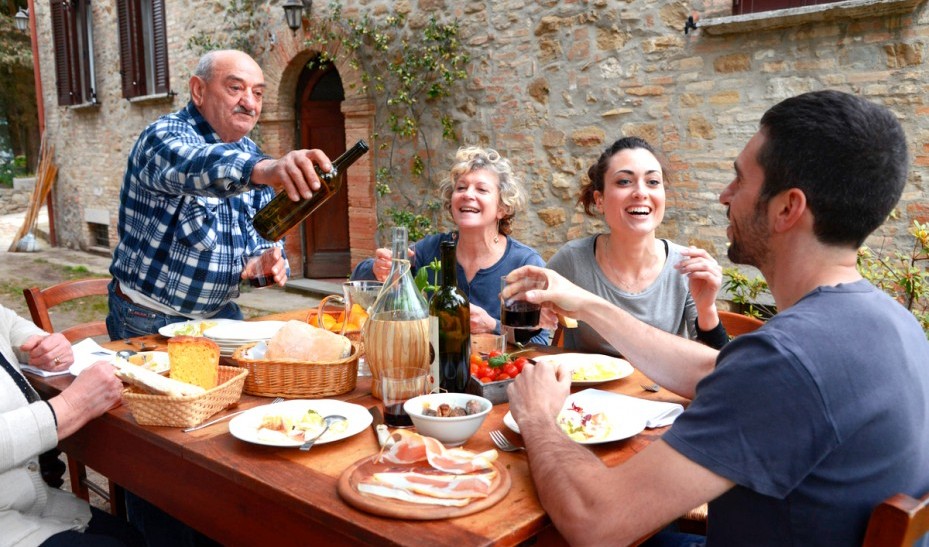
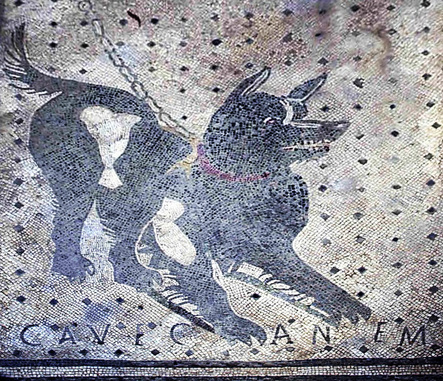
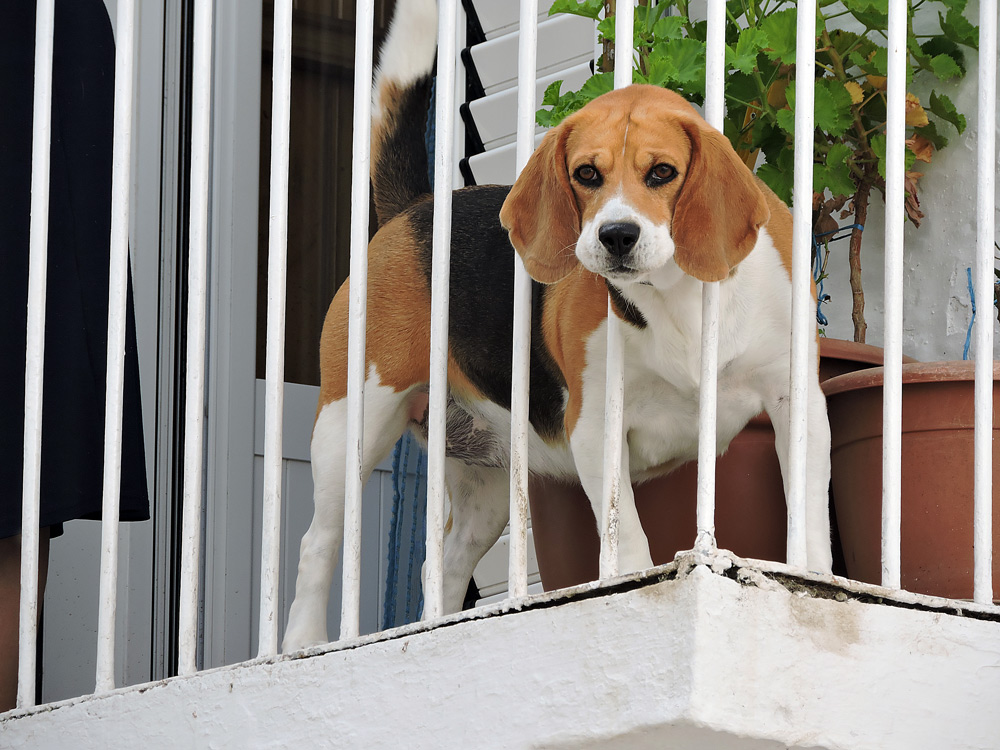
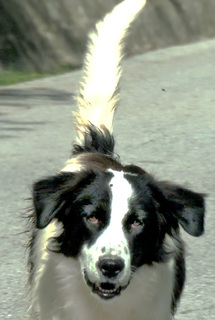
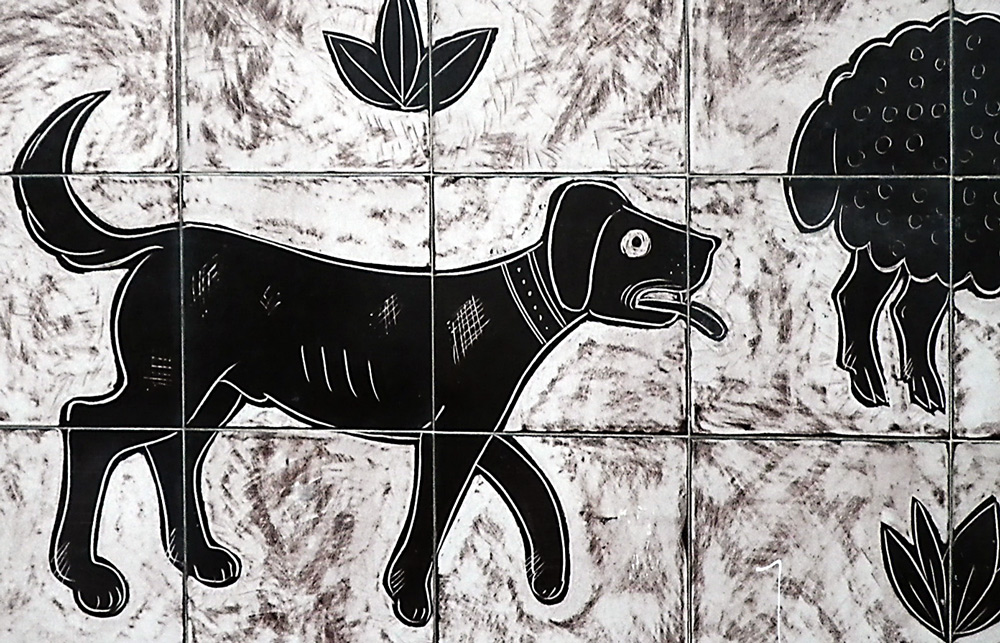
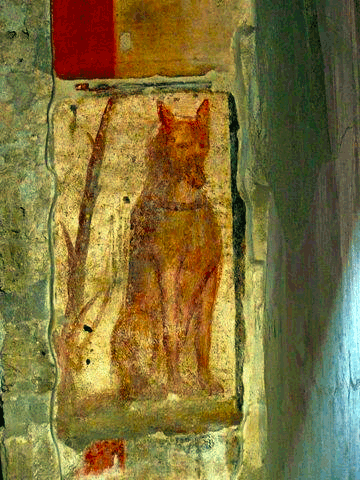
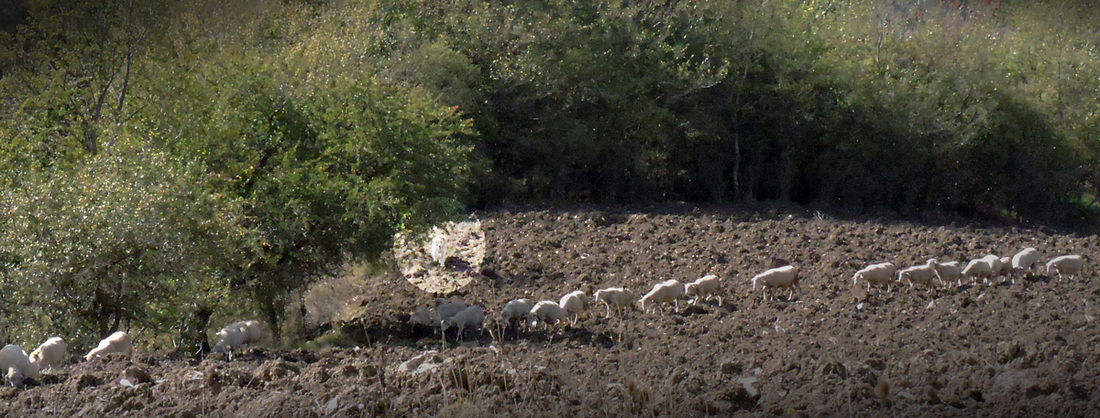
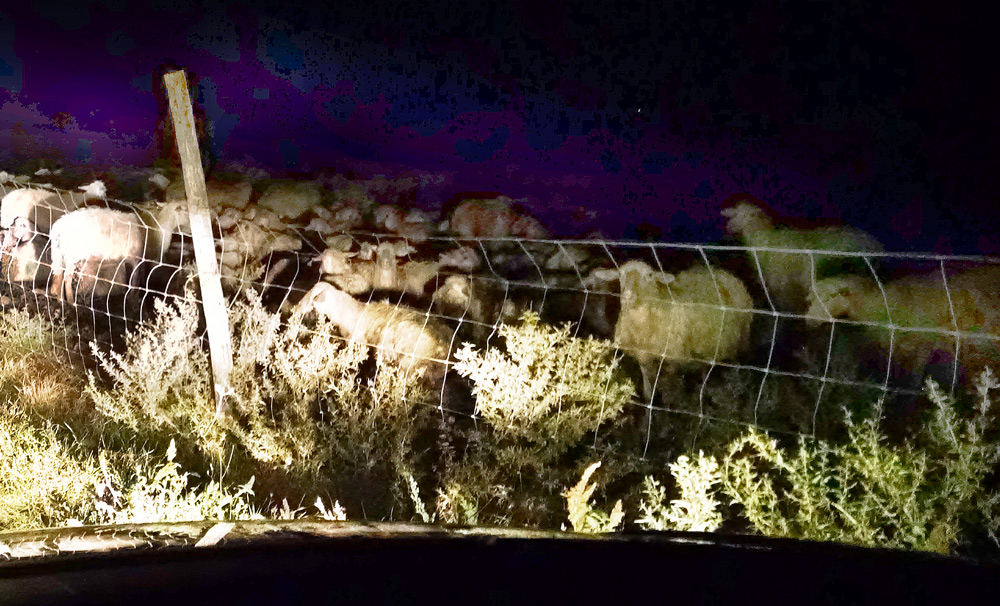
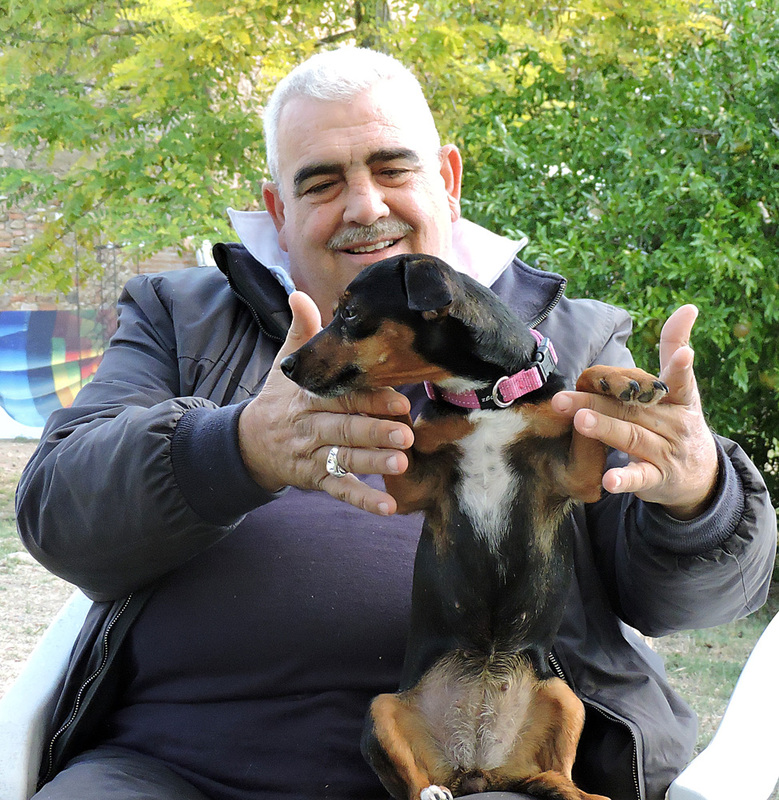
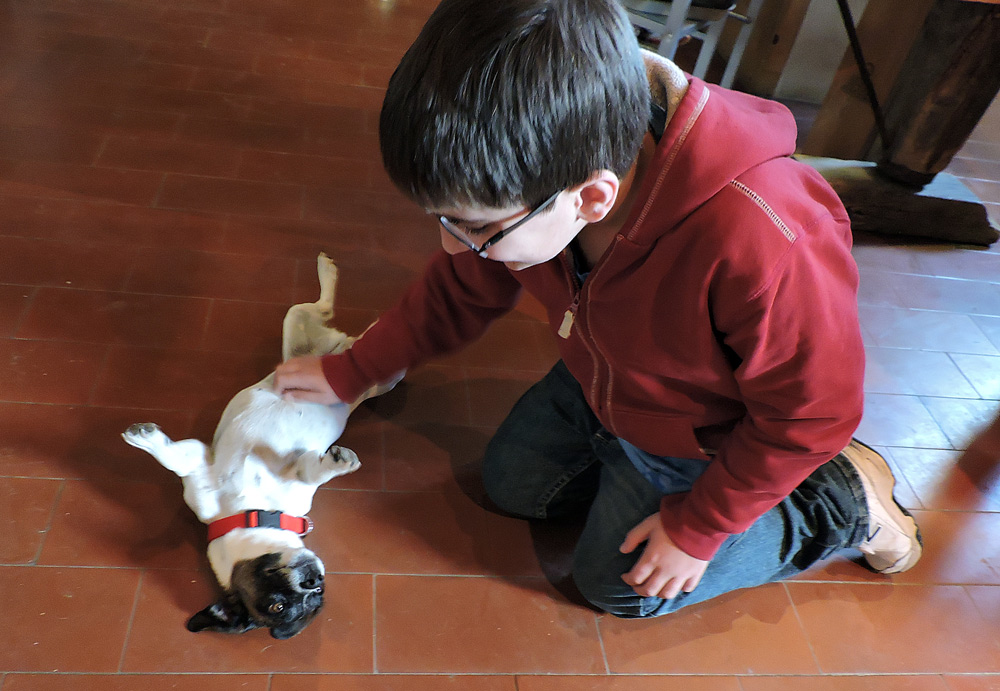
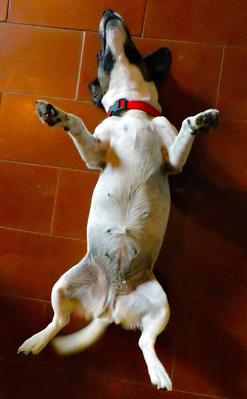
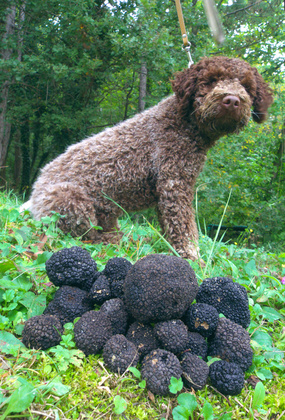
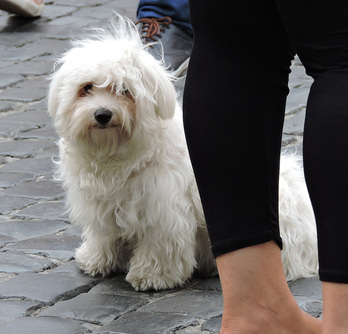
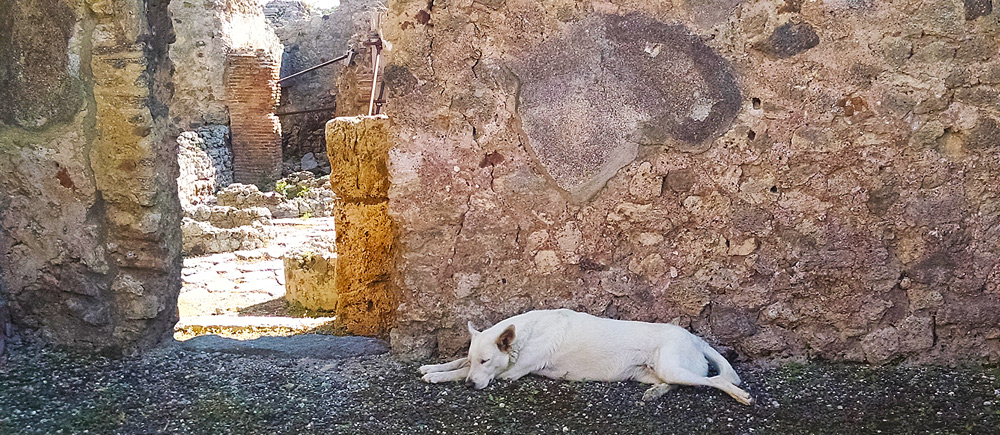
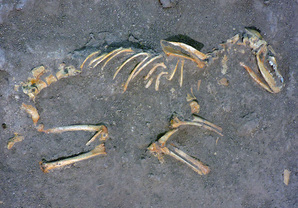
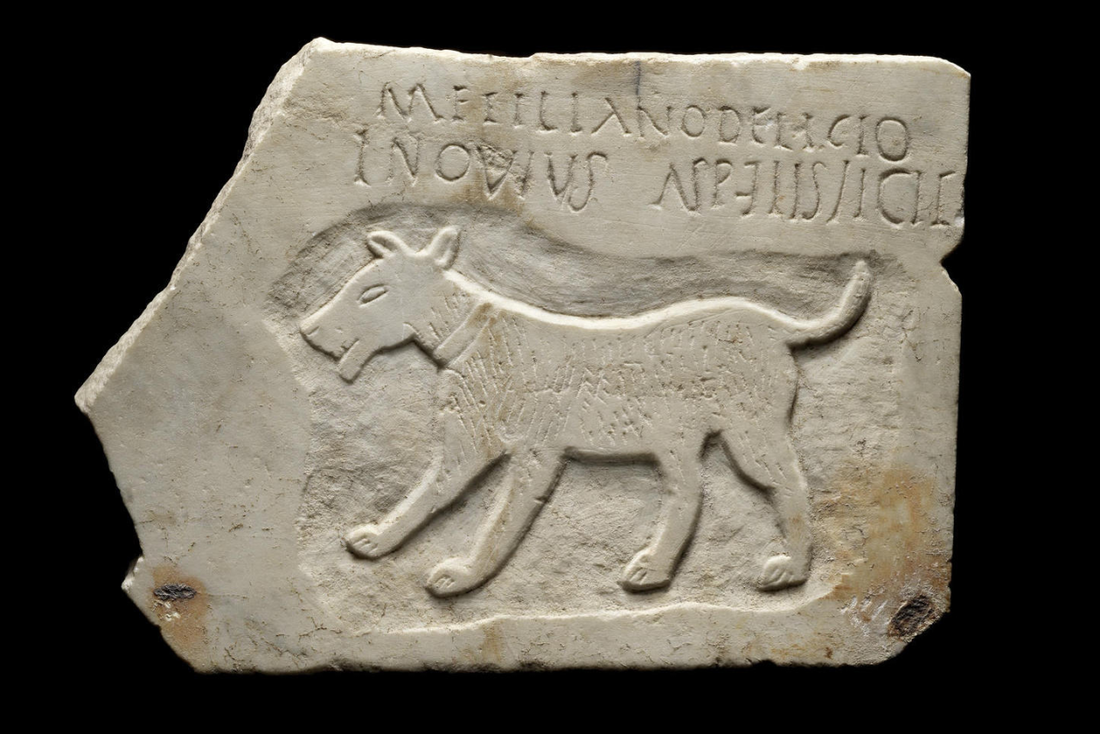
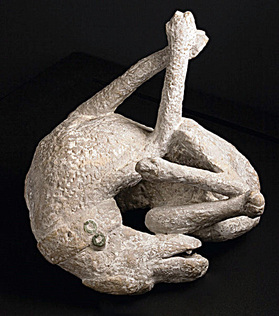
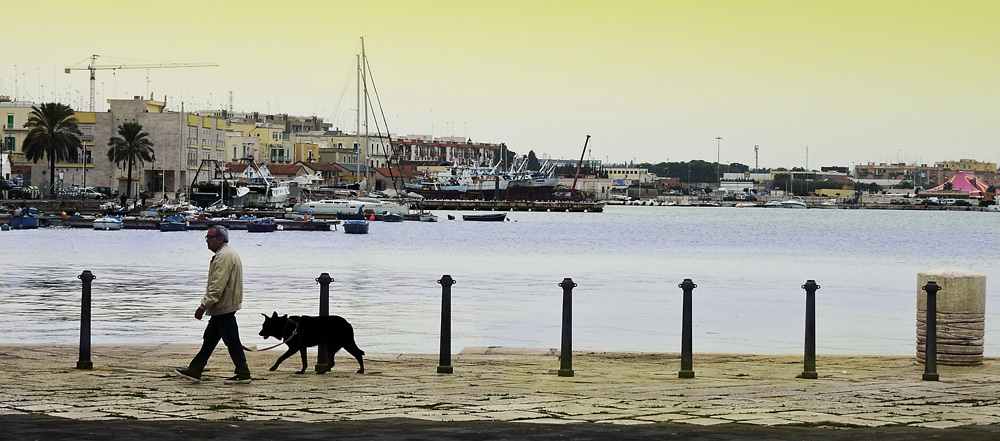
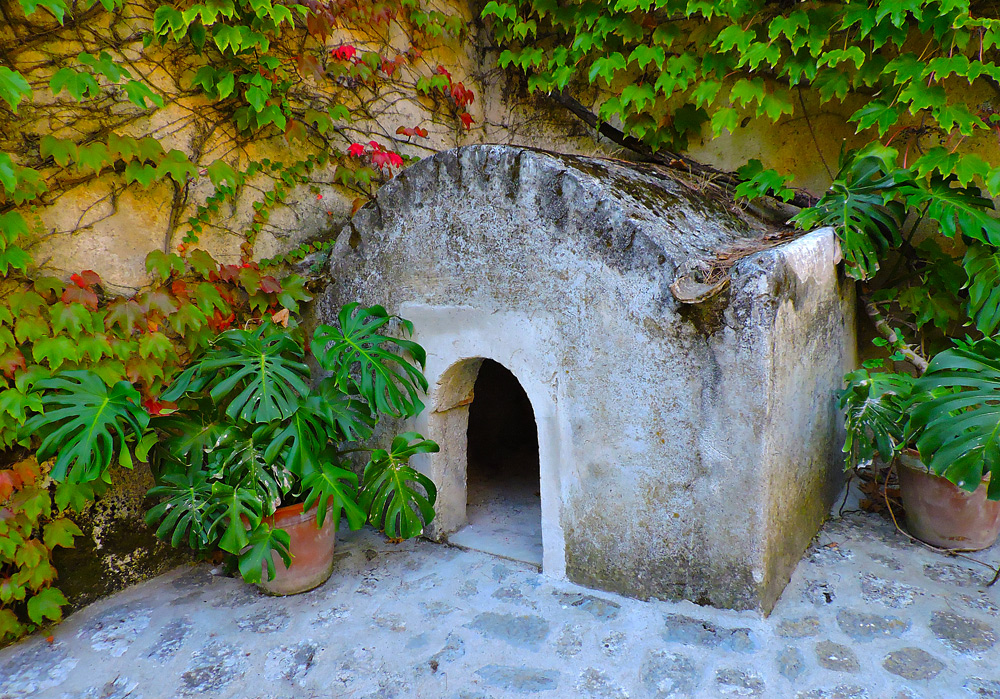
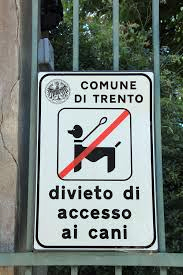
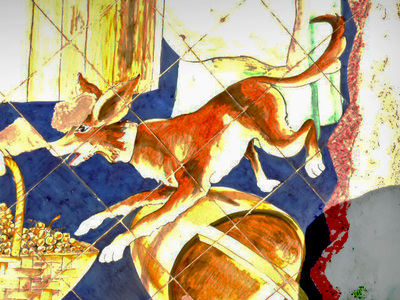
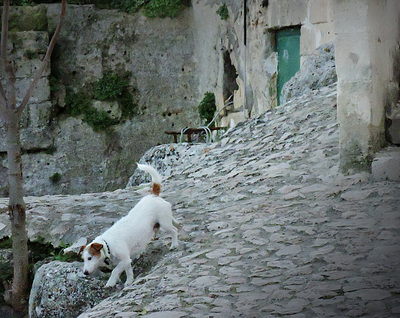
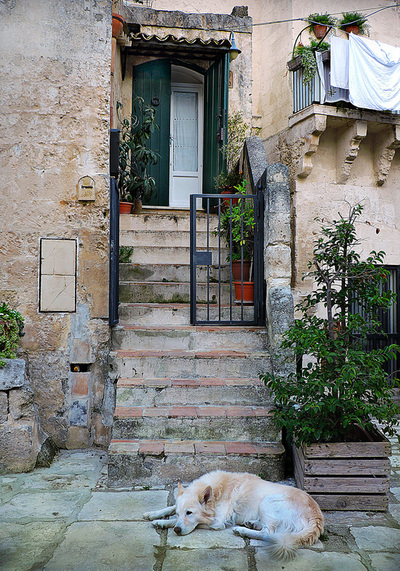
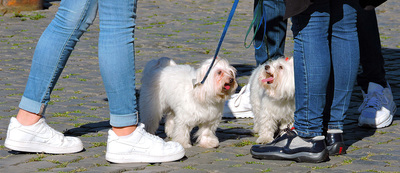
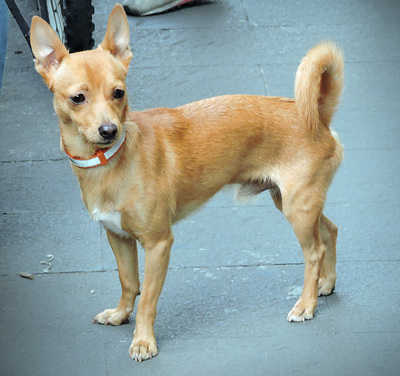
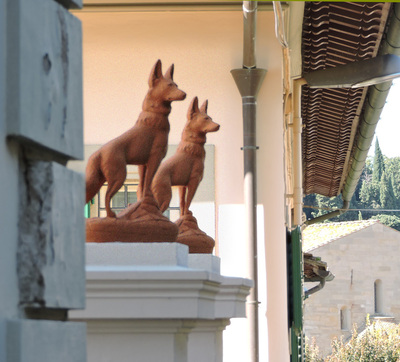
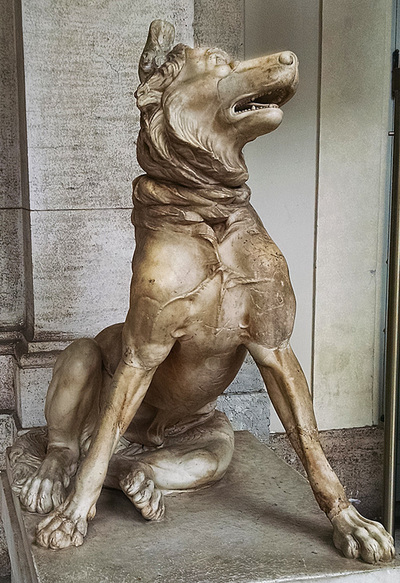
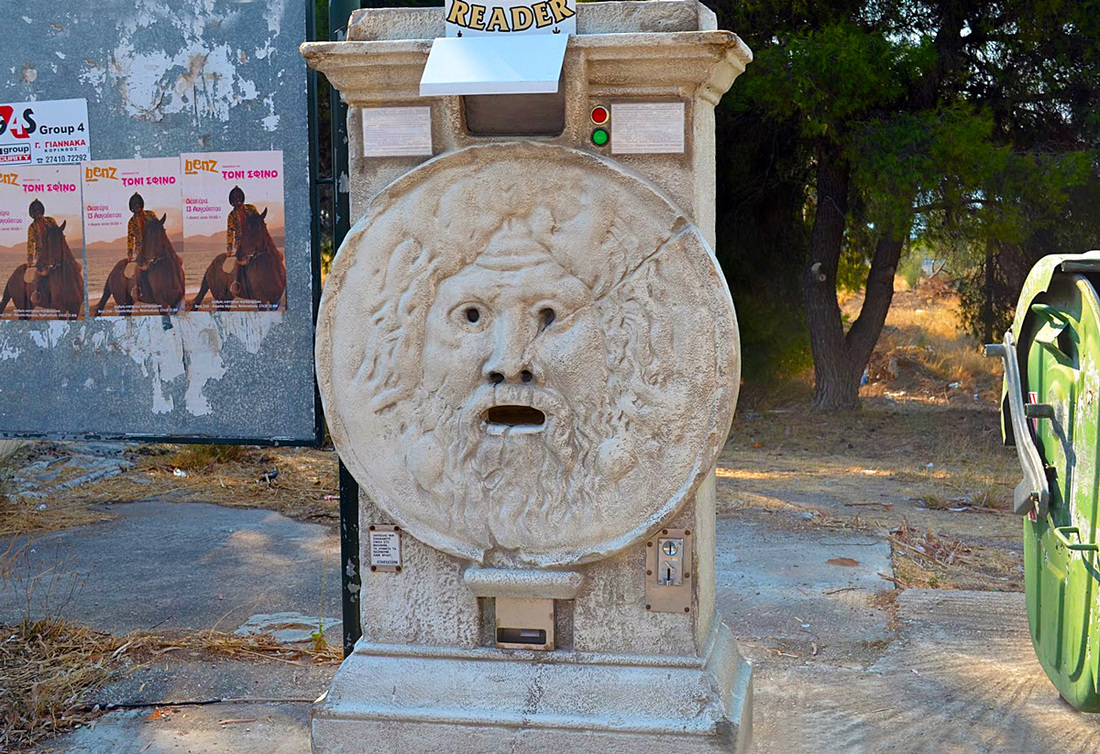
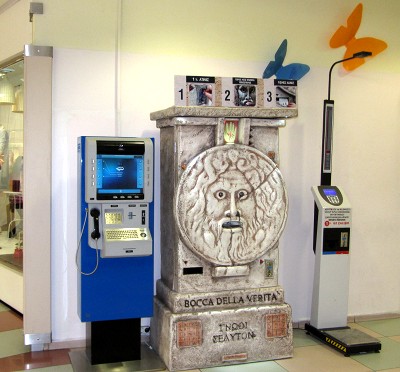
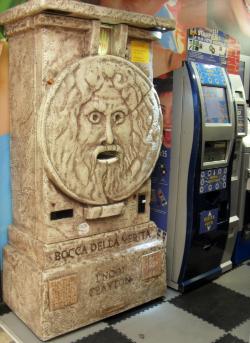
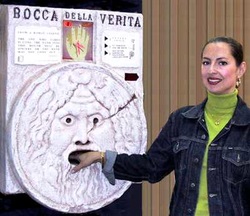
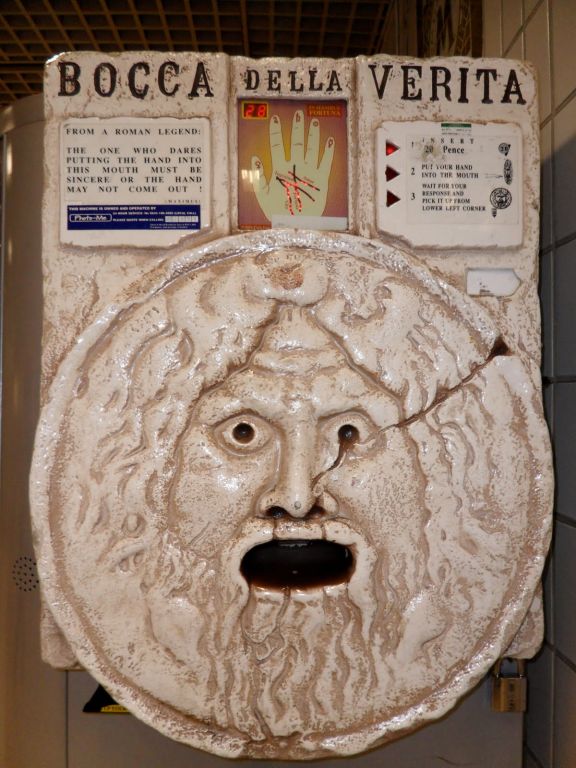

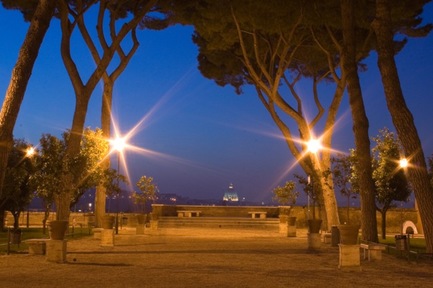
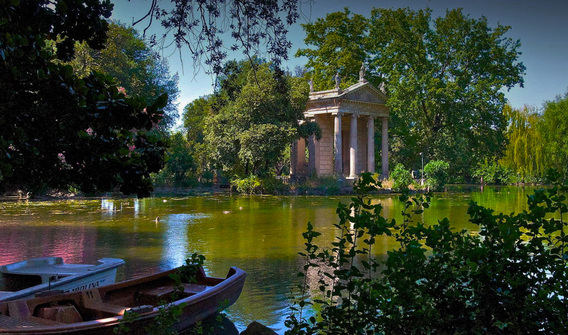
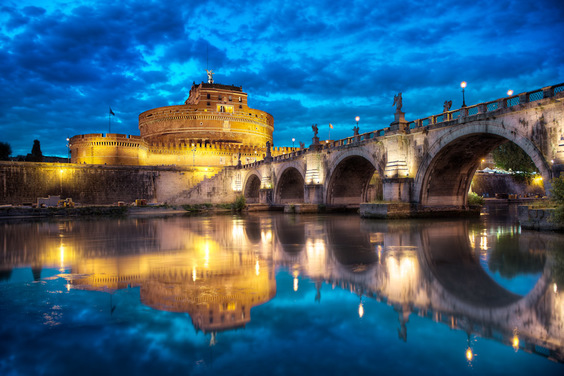
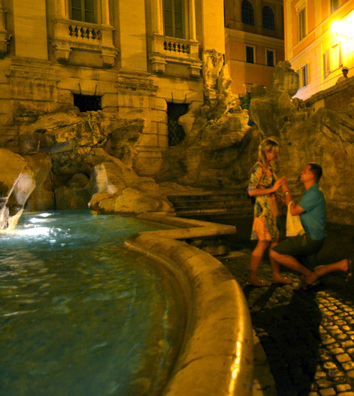
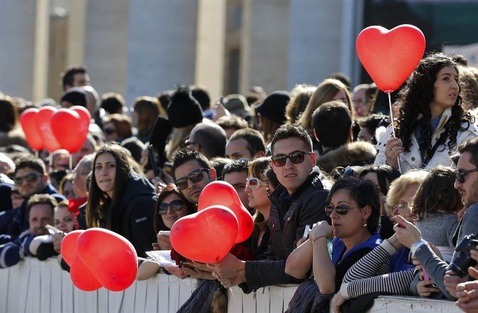
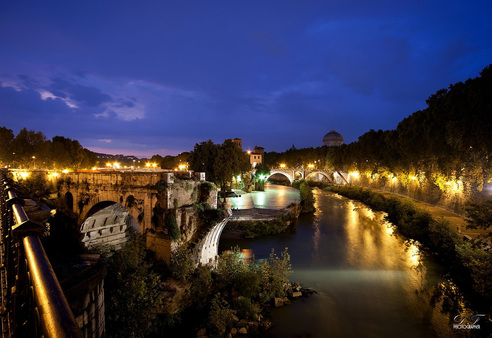
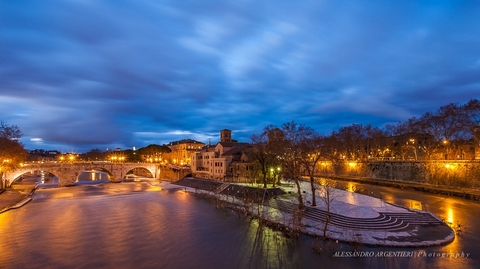
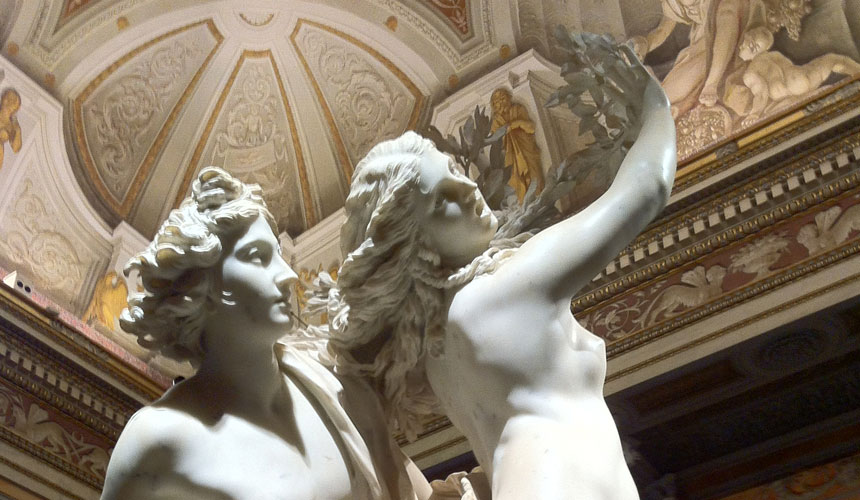
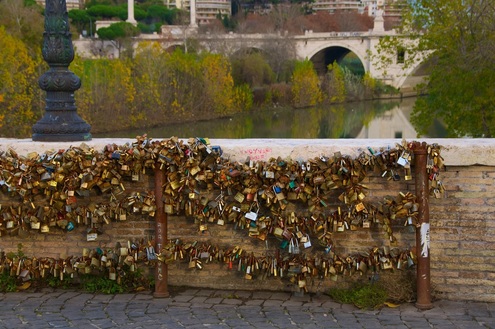
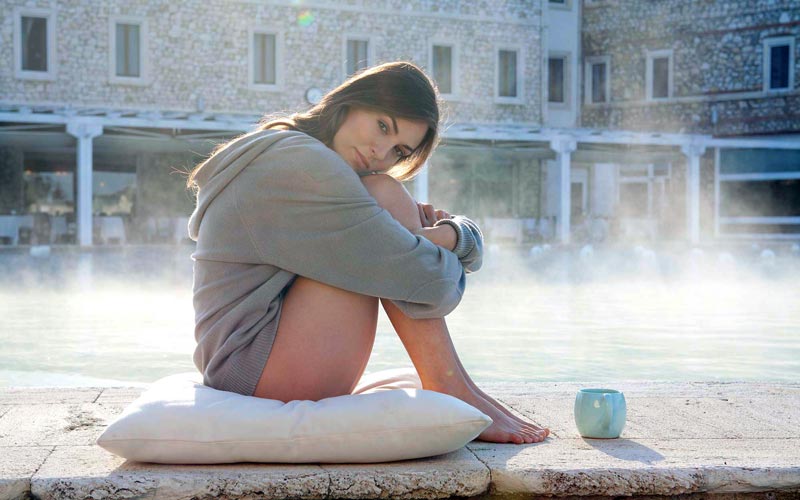

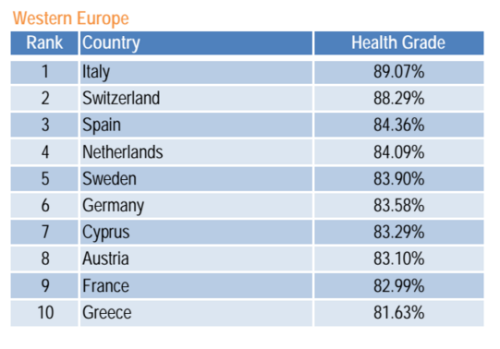
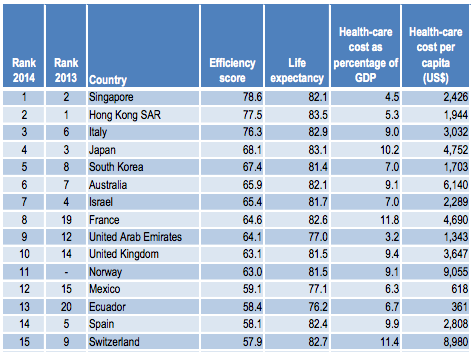

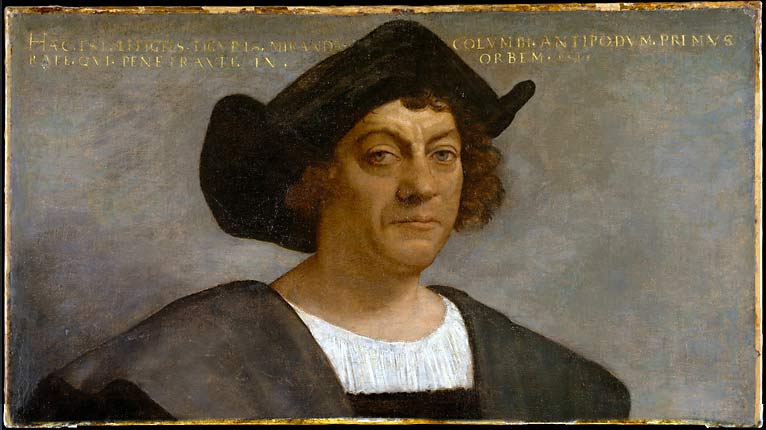
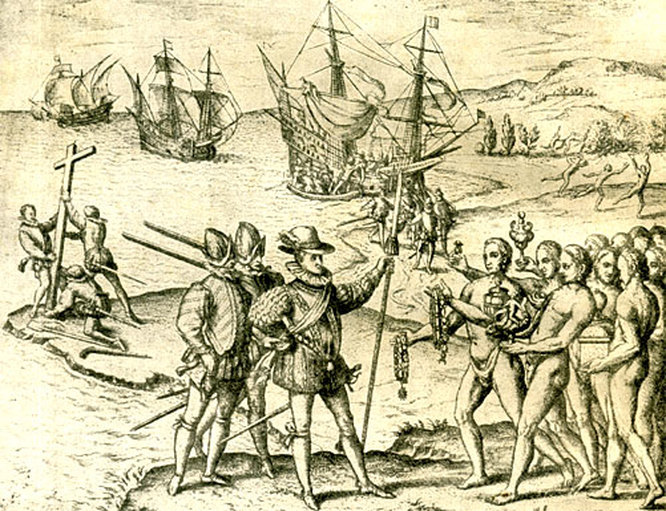
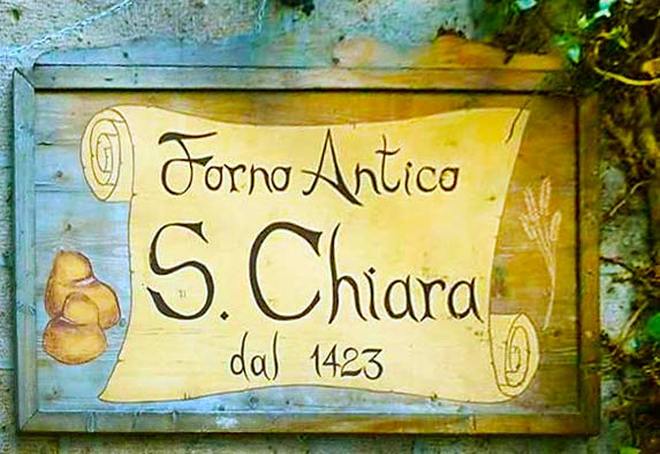
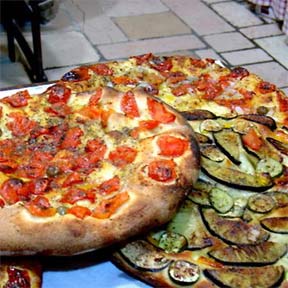
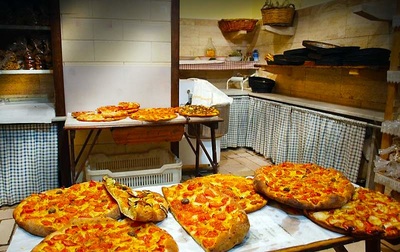
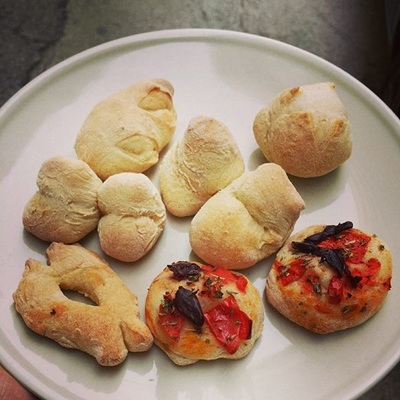
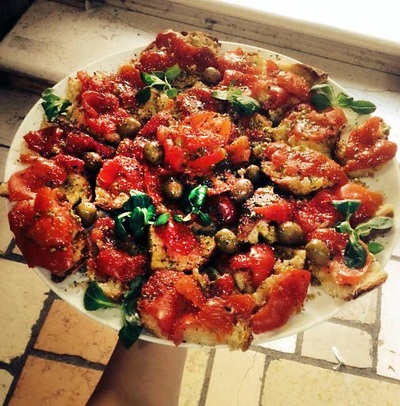
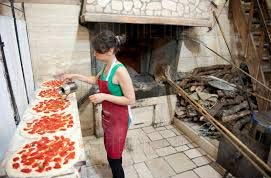
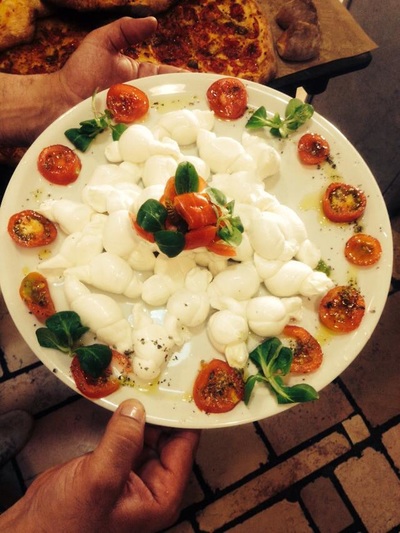
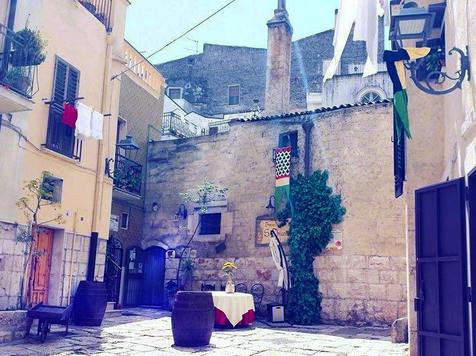
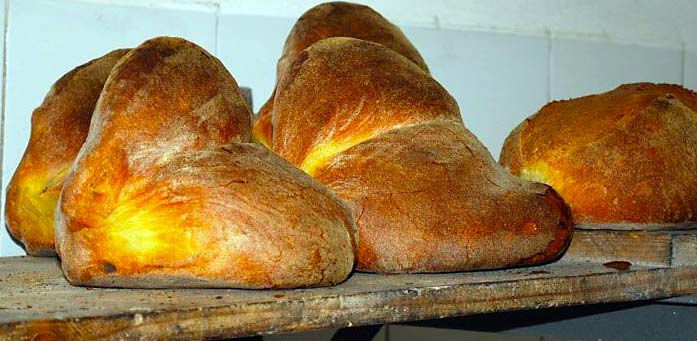
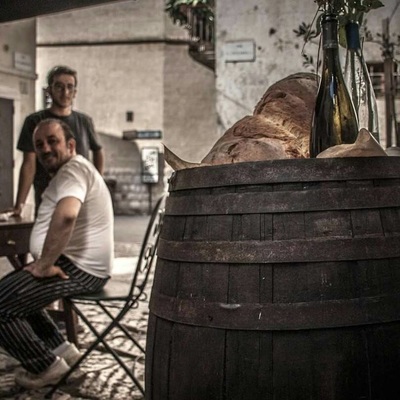
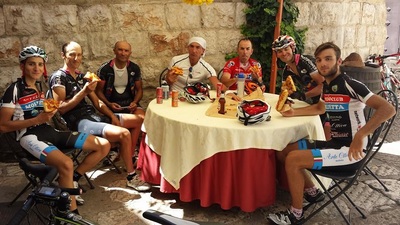
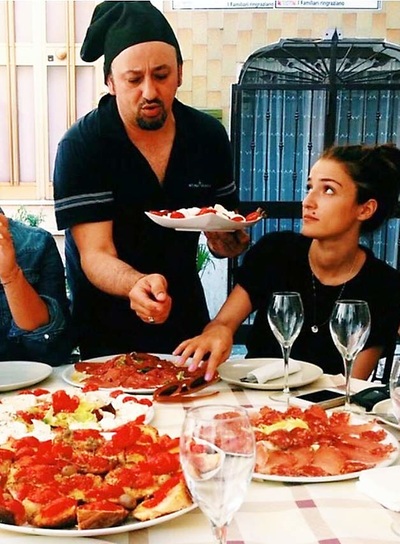
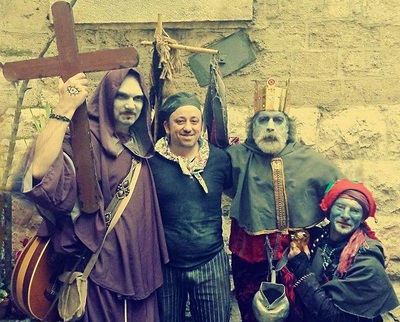
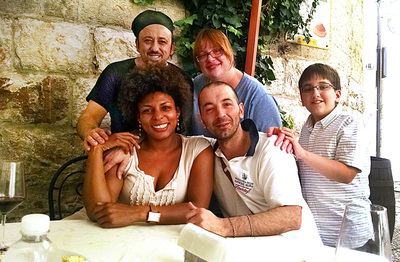
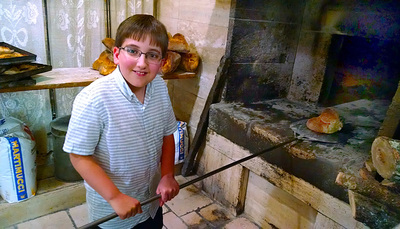
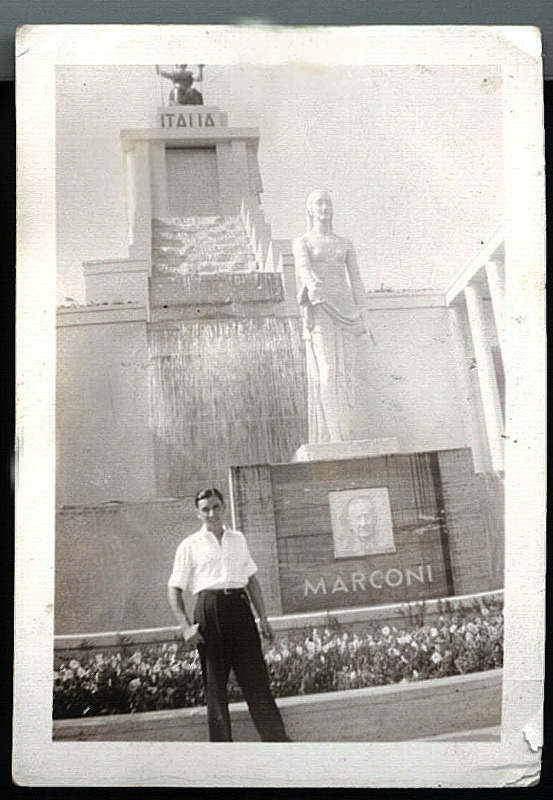
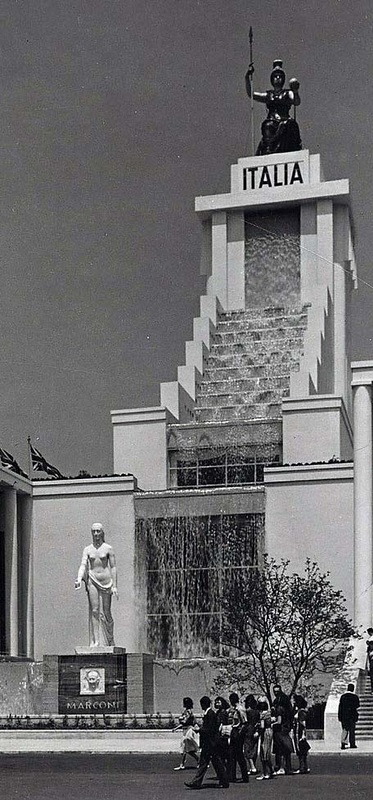
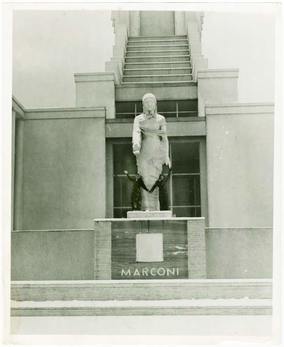
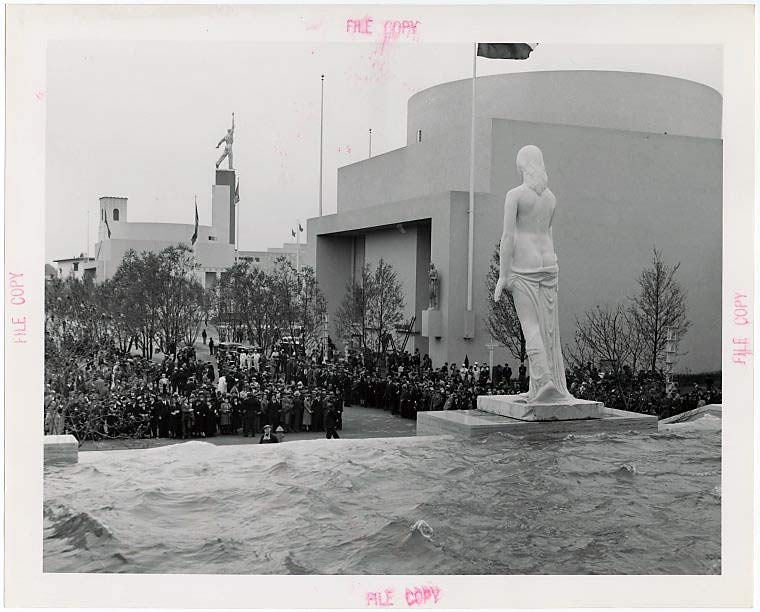
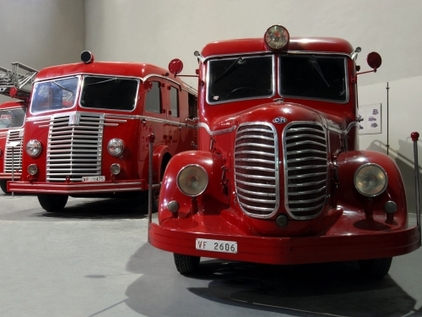
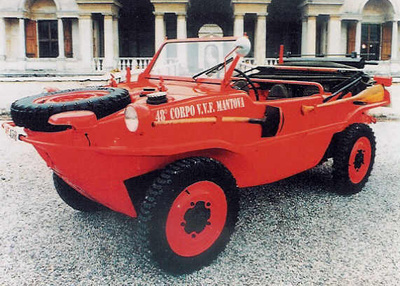
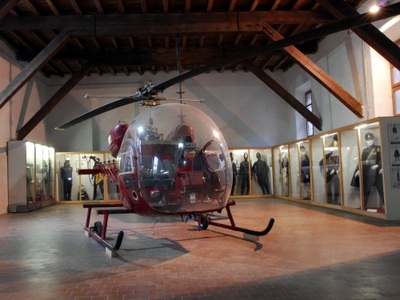

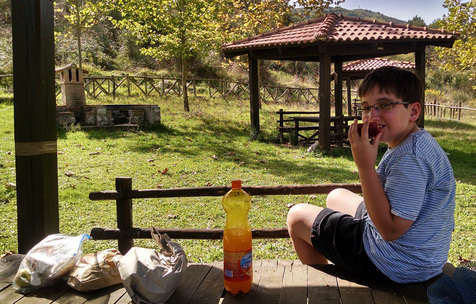
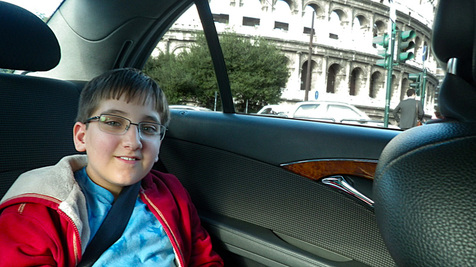
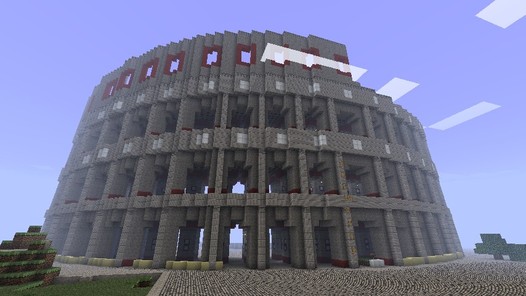

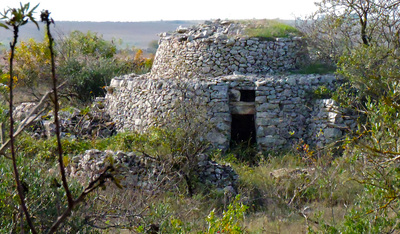
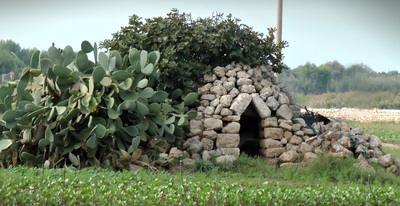
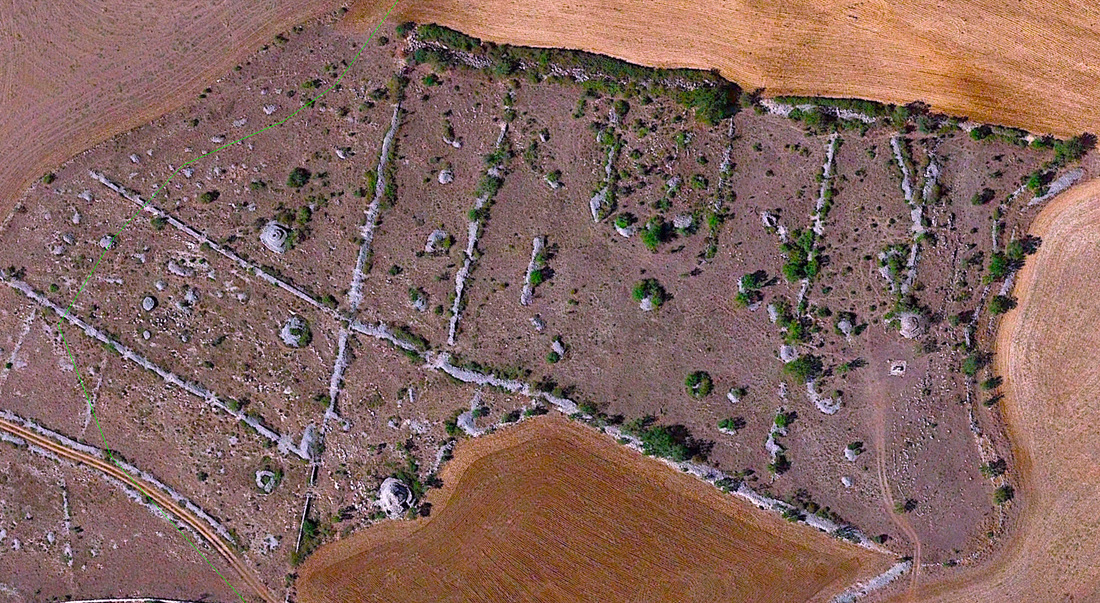

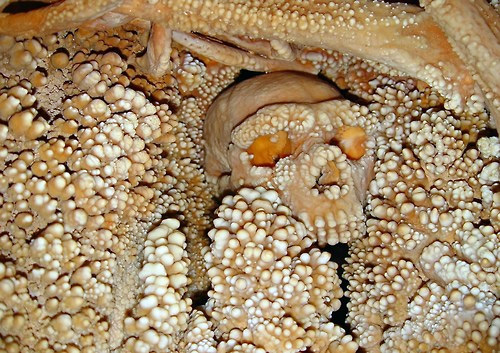
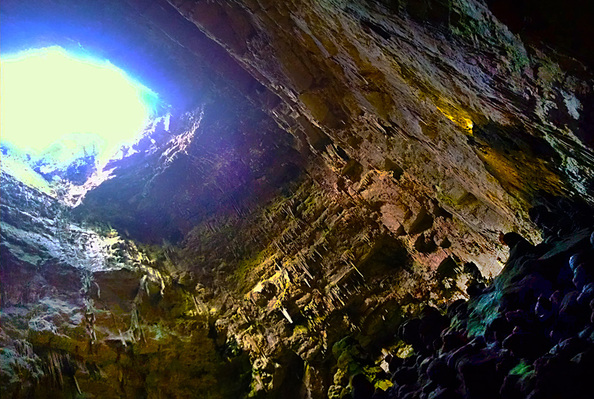
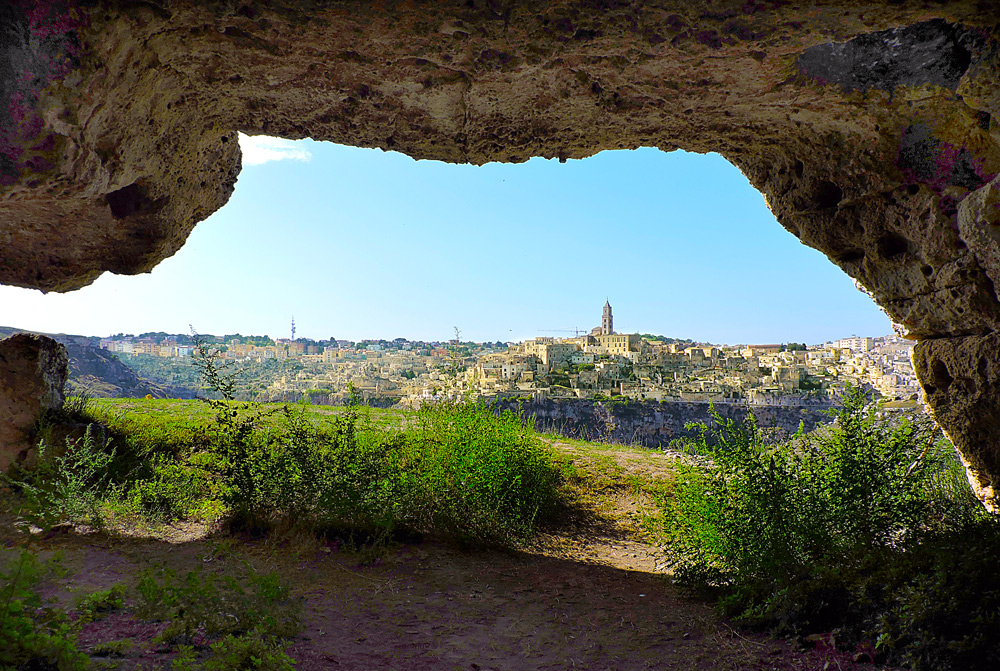
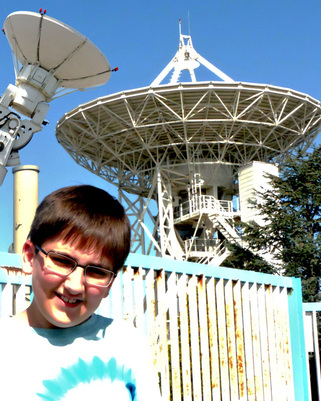
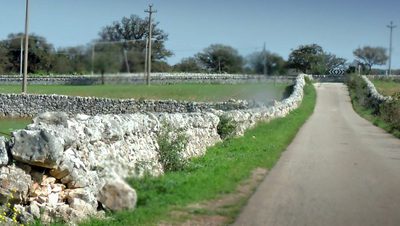
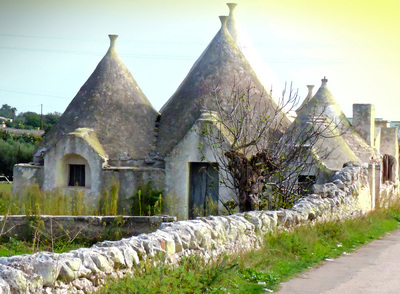
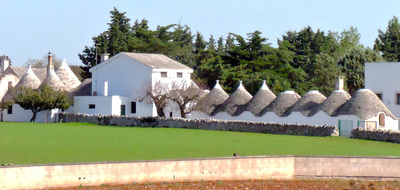
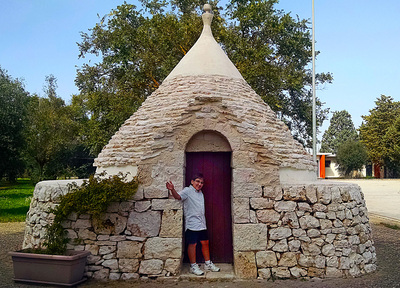
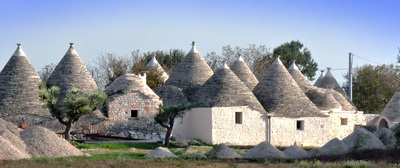
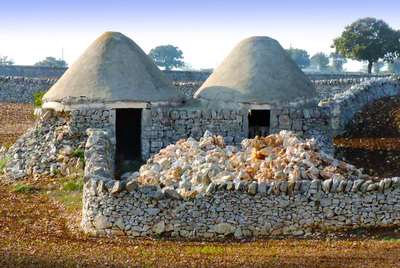
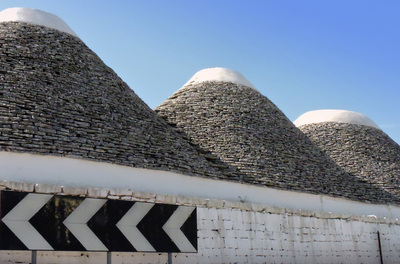
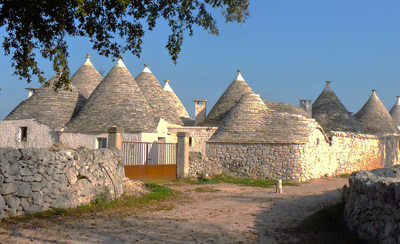
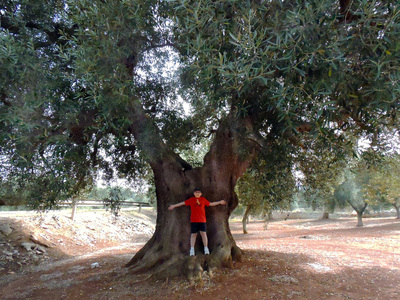
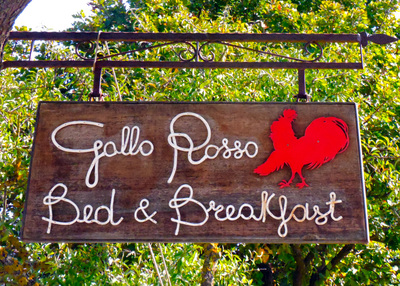
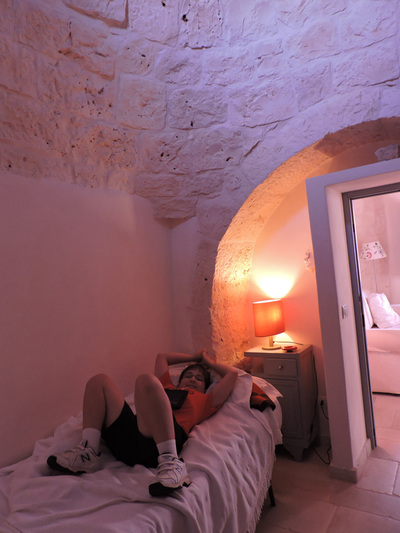
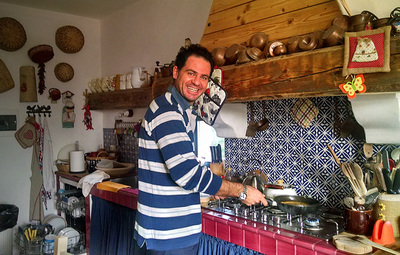
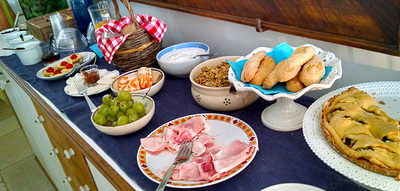
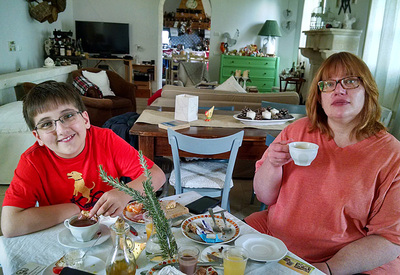
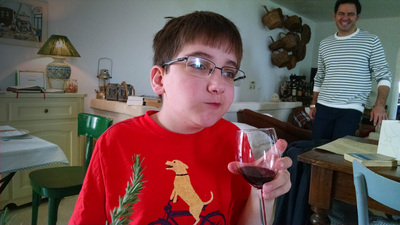
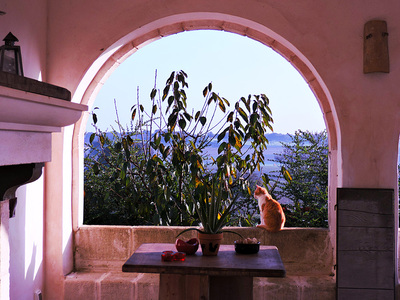
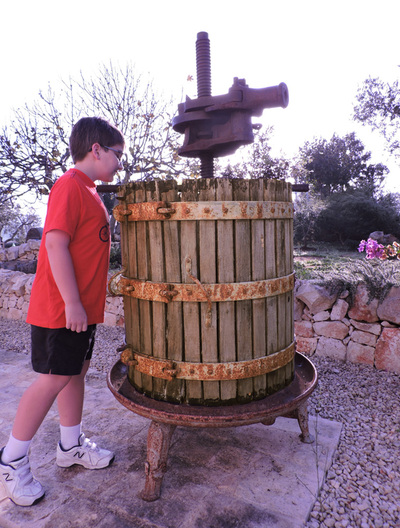
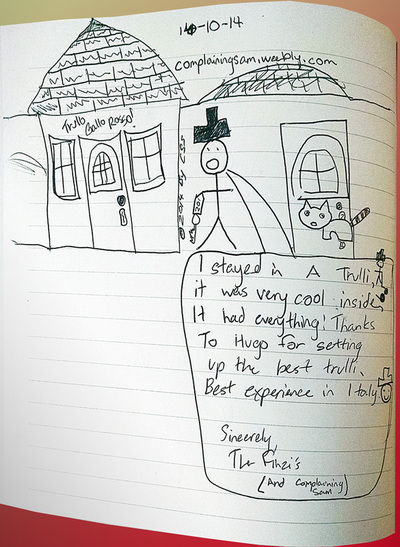
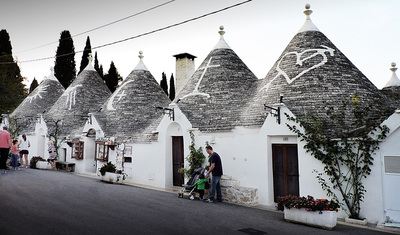
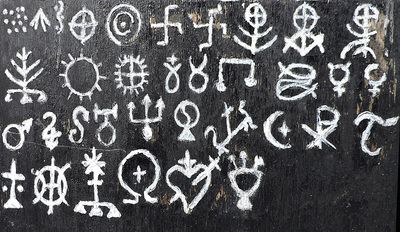
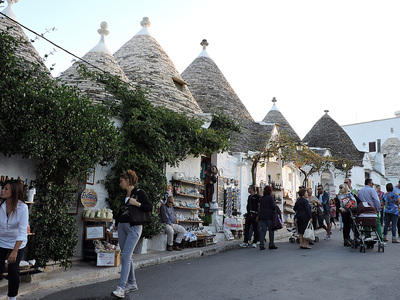
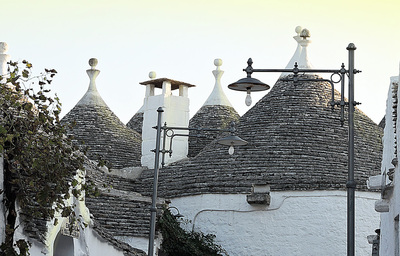
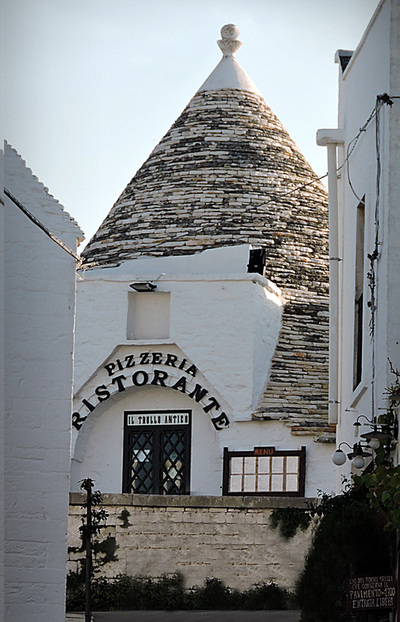
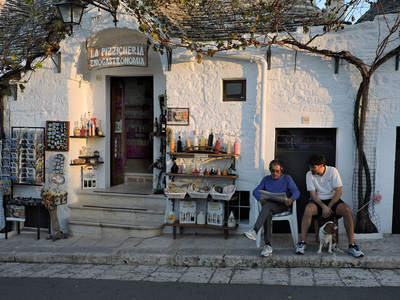
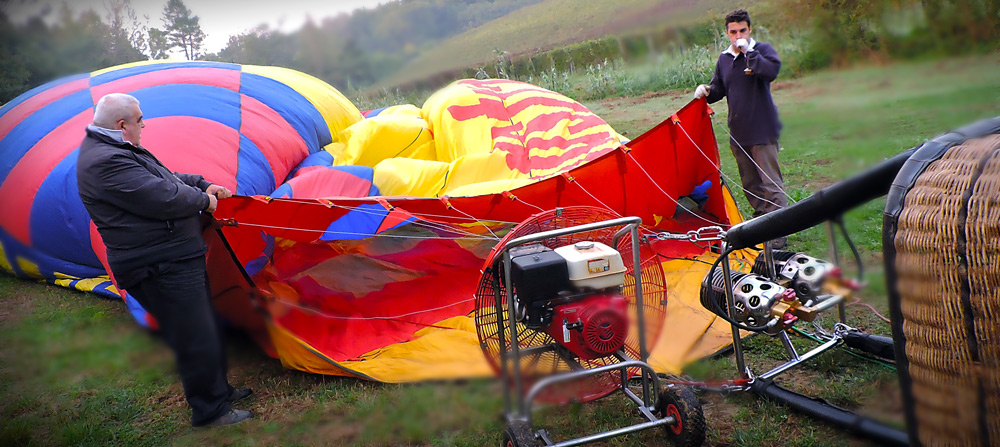
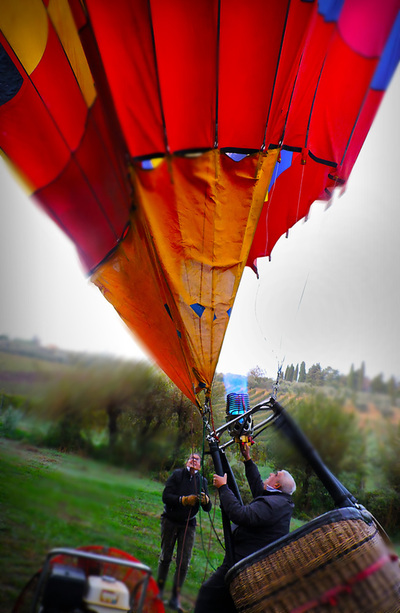
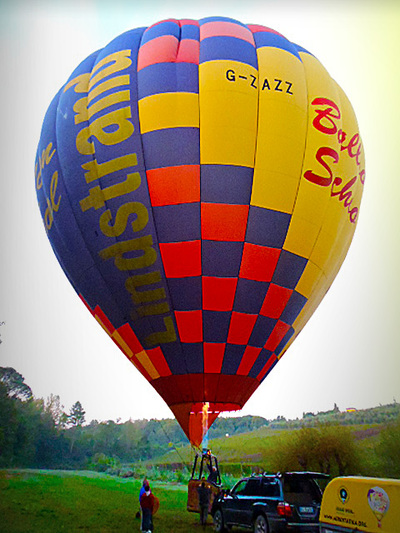
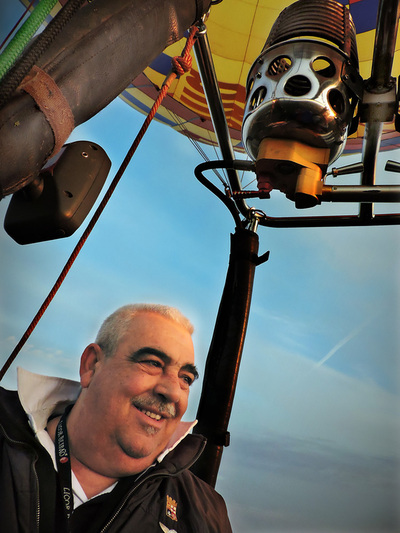
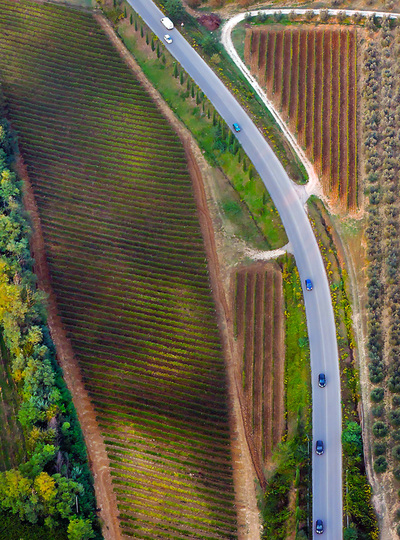
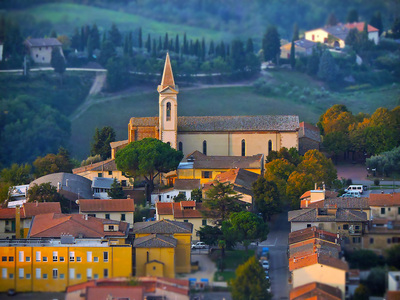
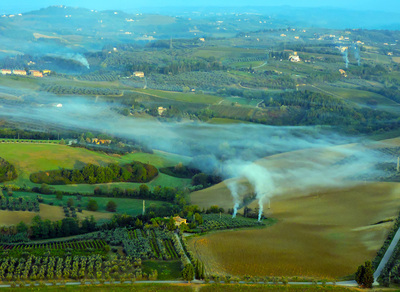
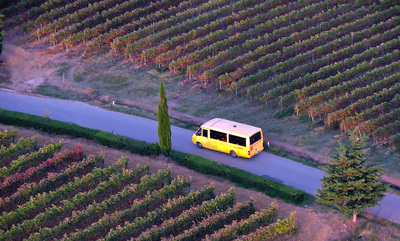
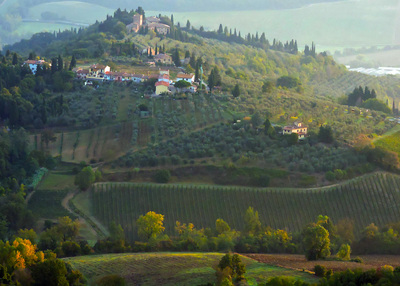
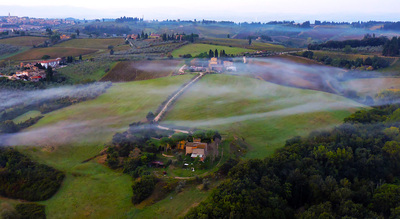
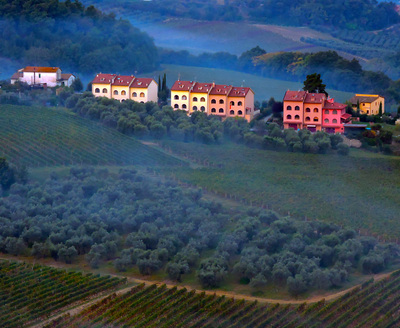
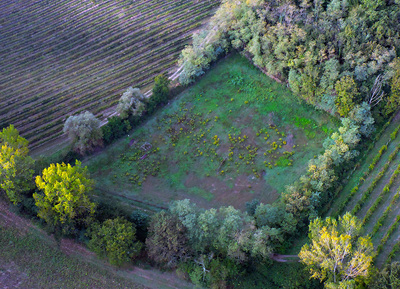
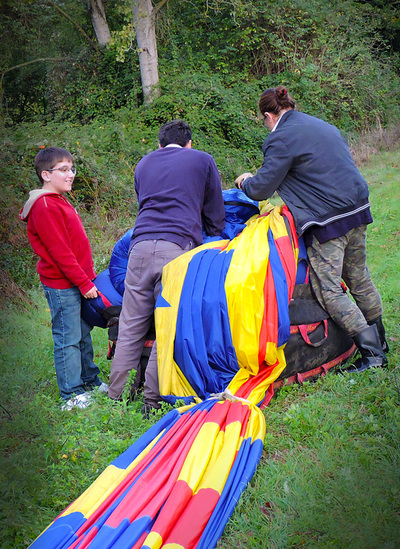
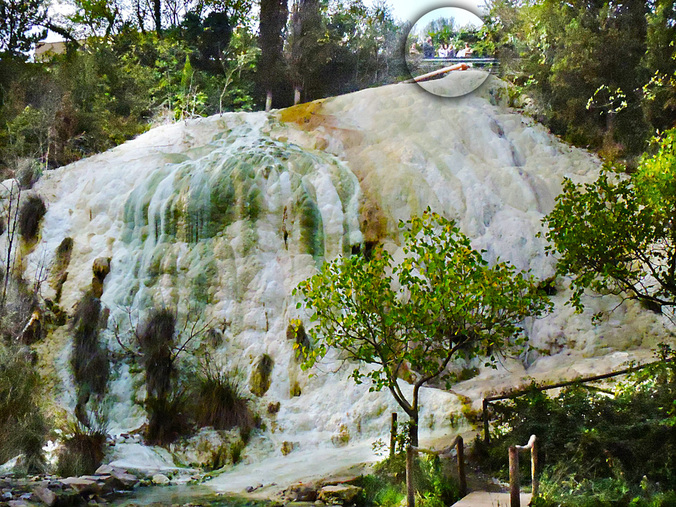
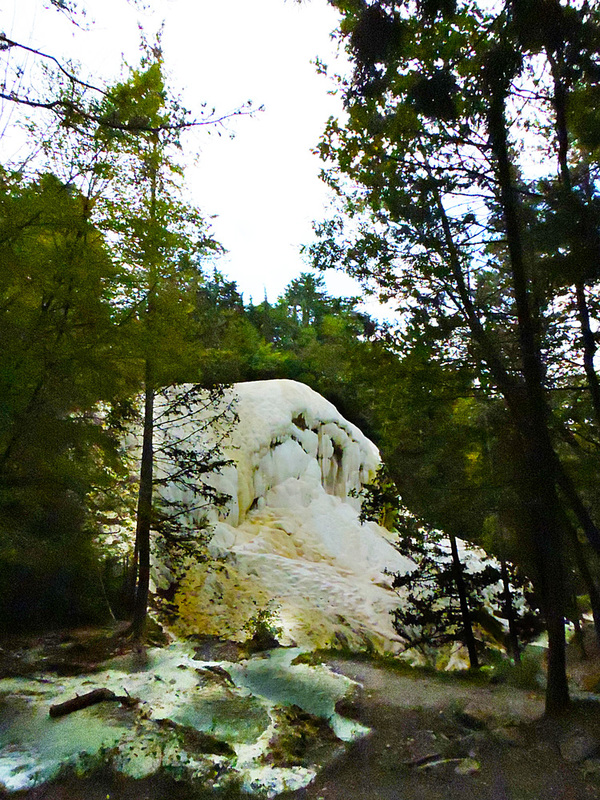
 RSS Feed
RSS Feed
